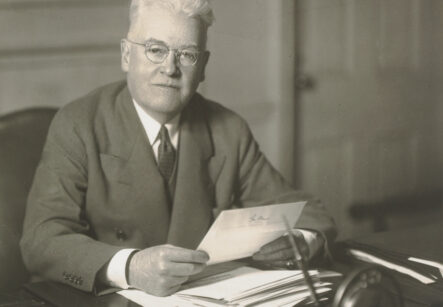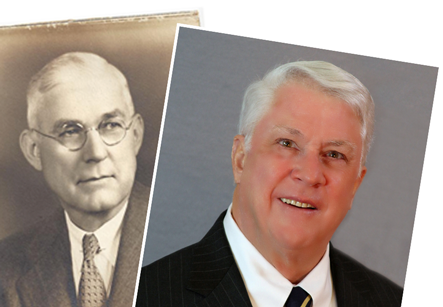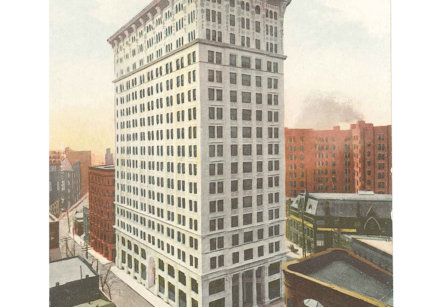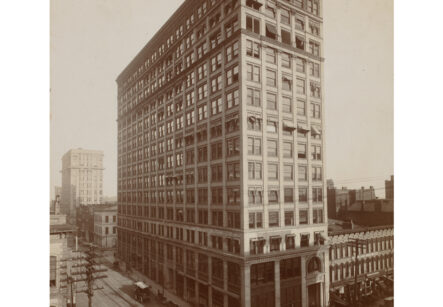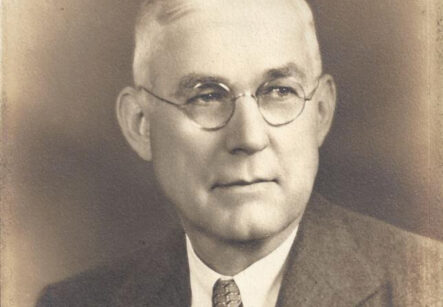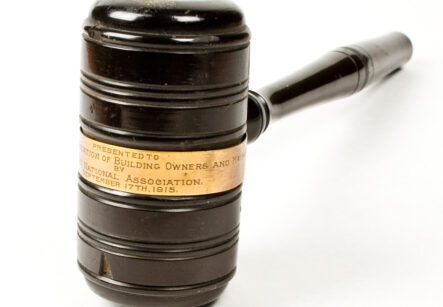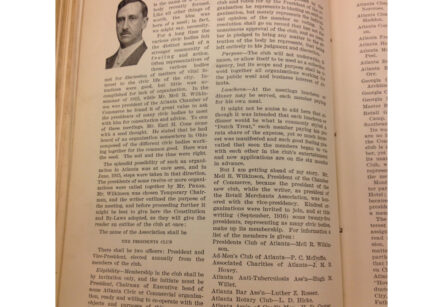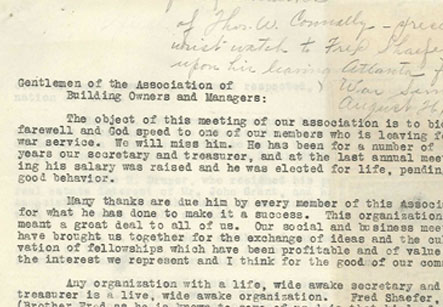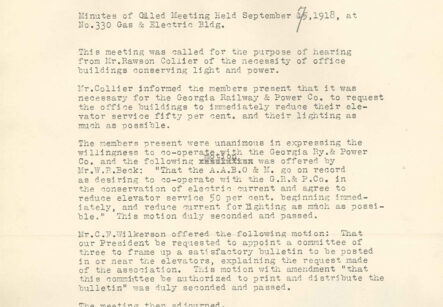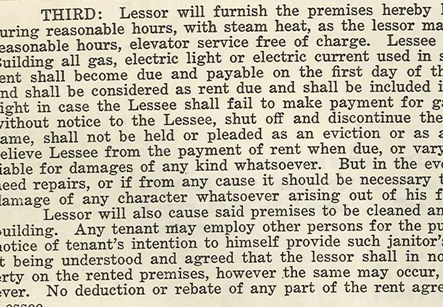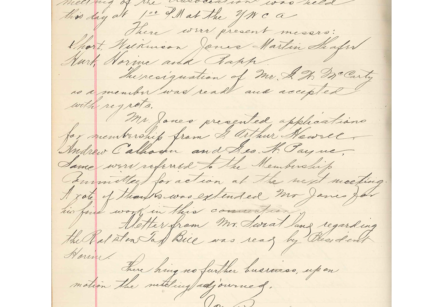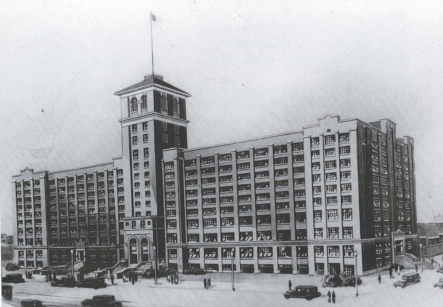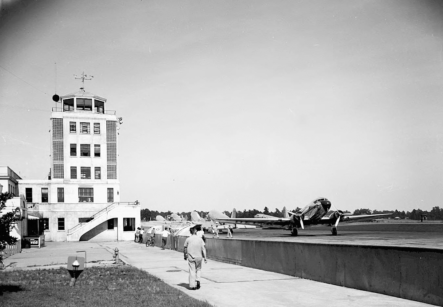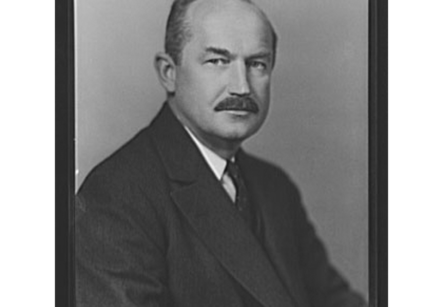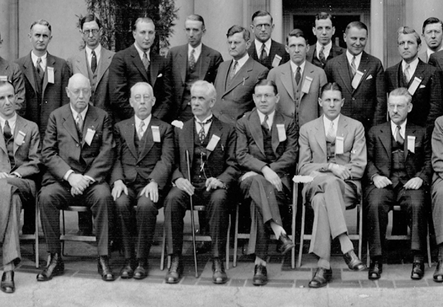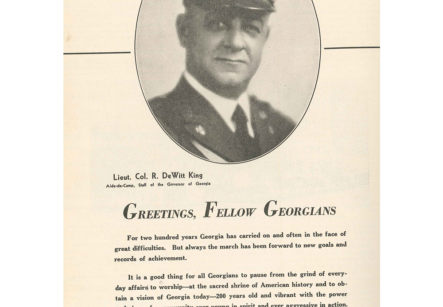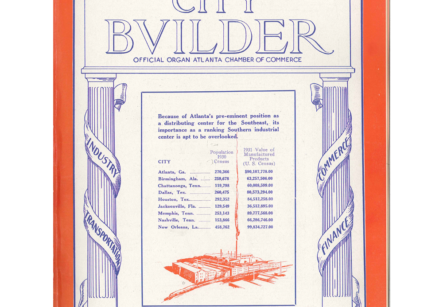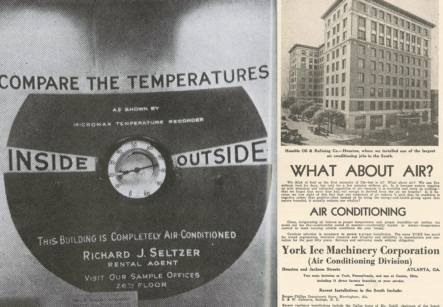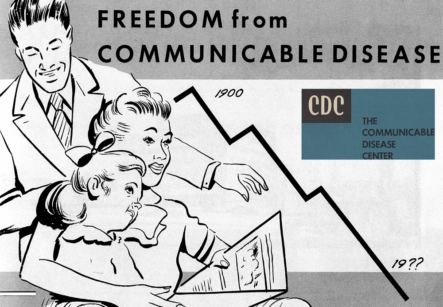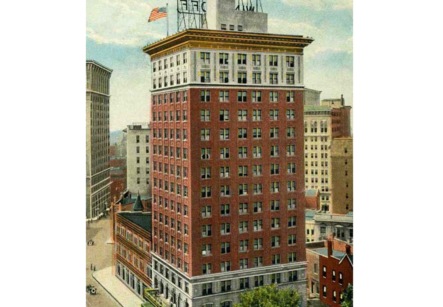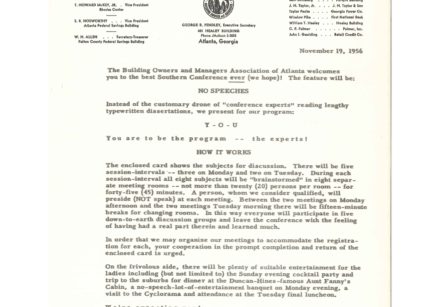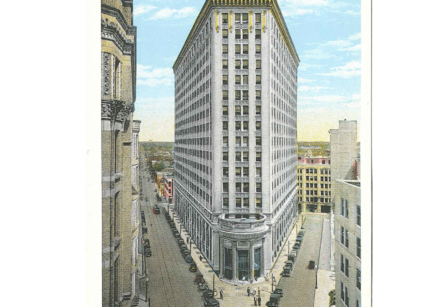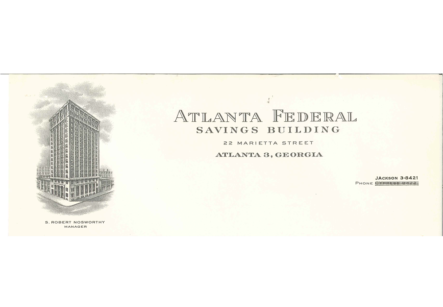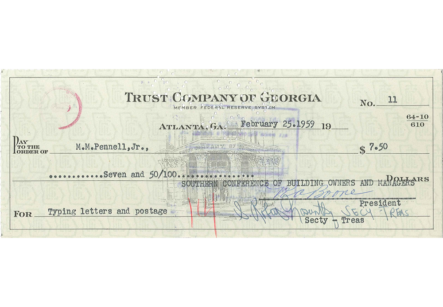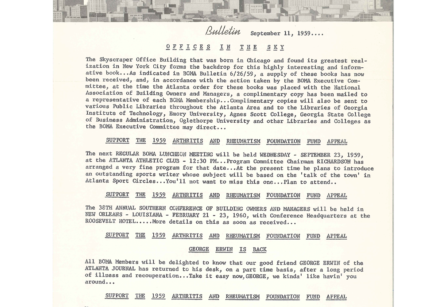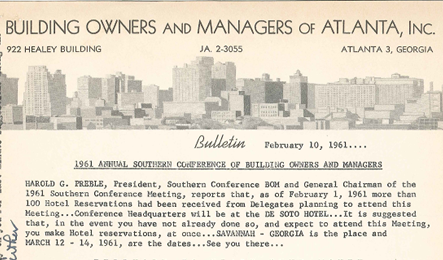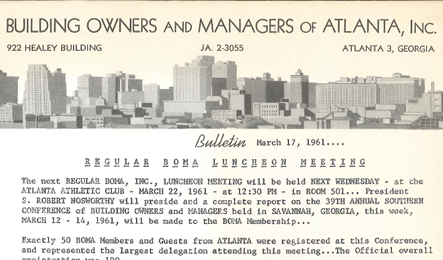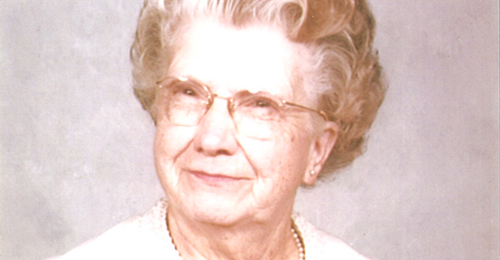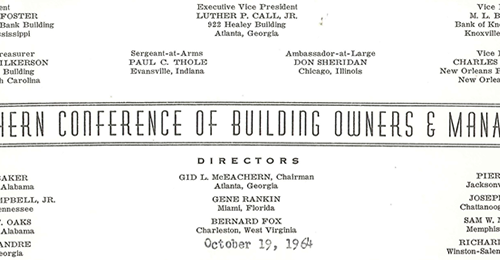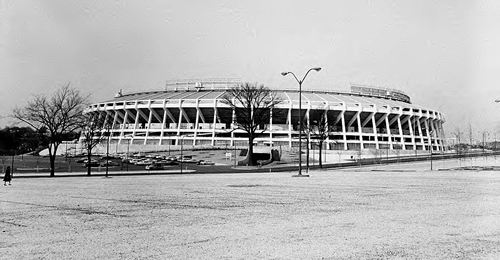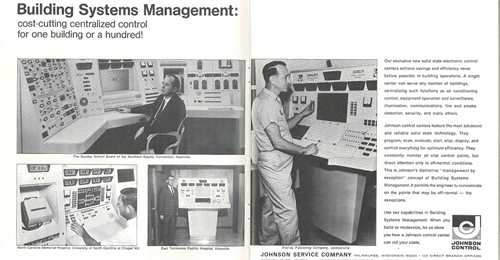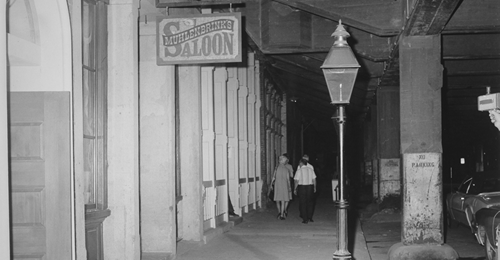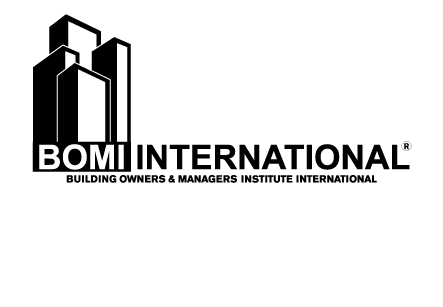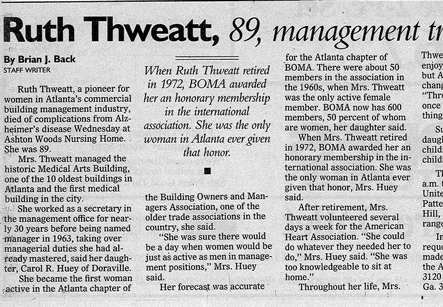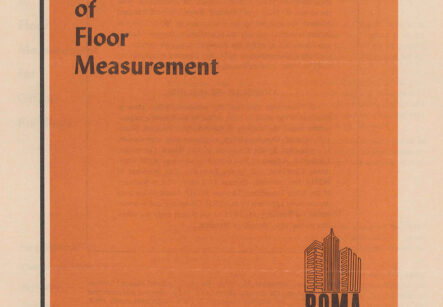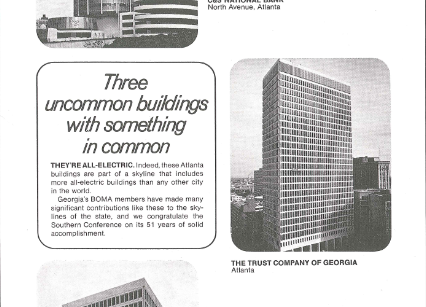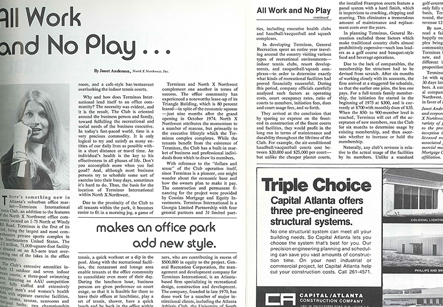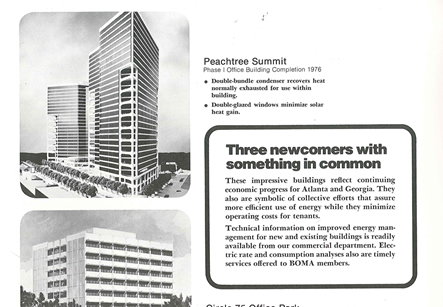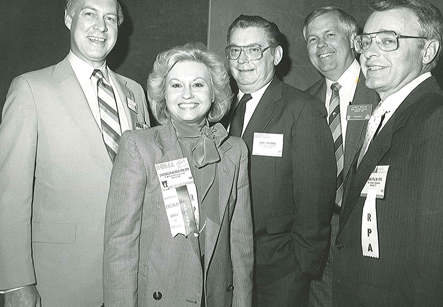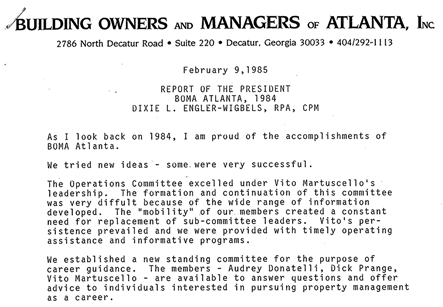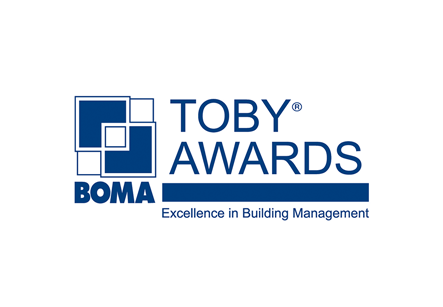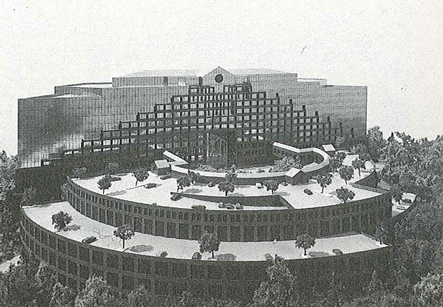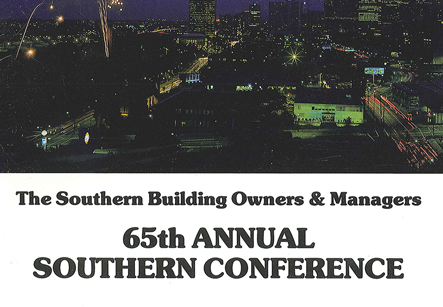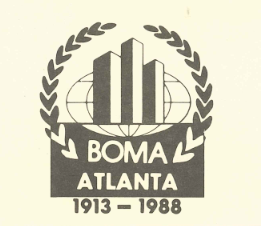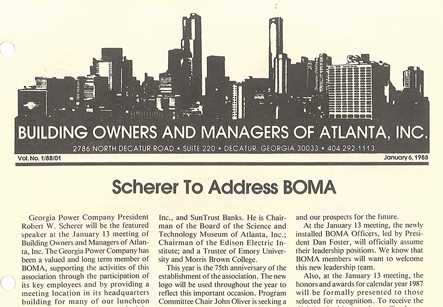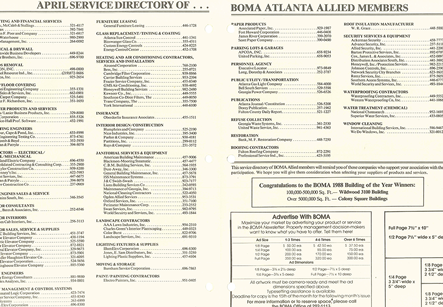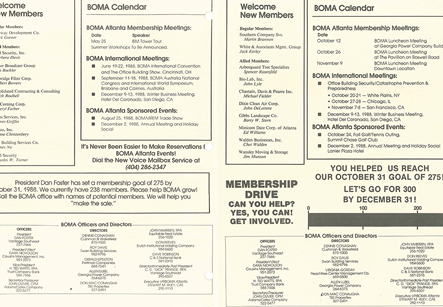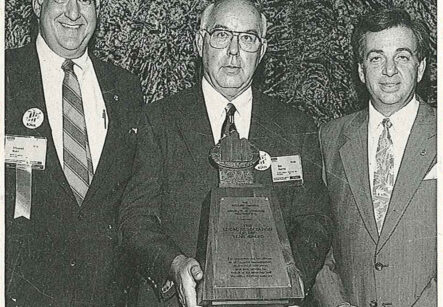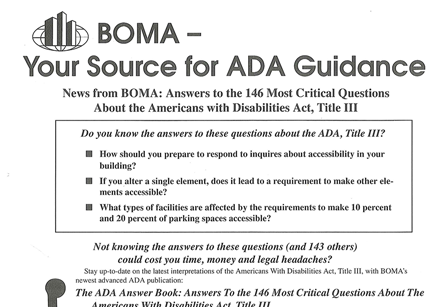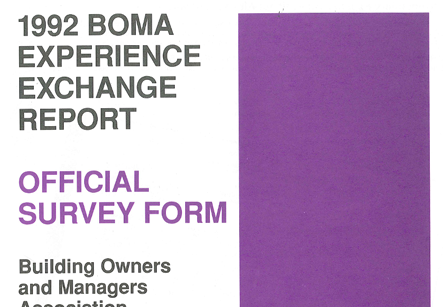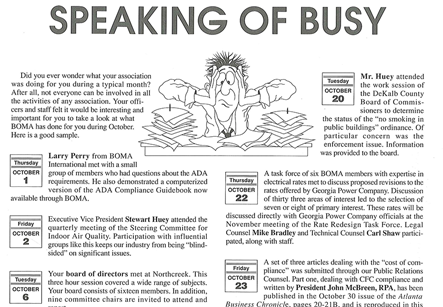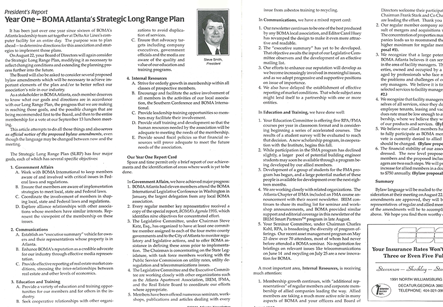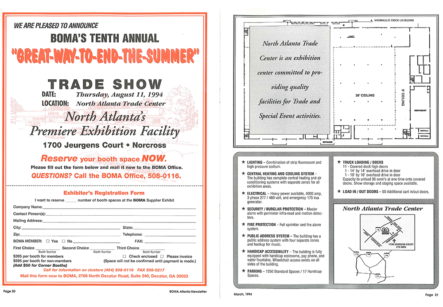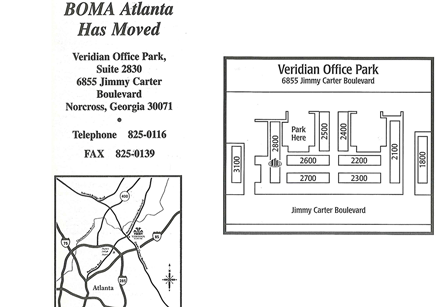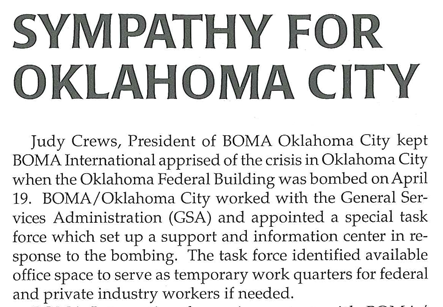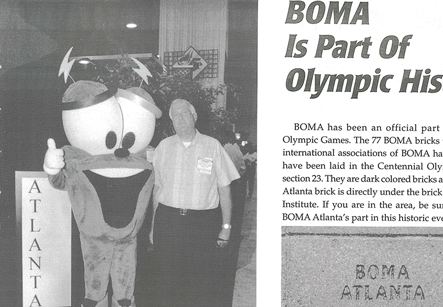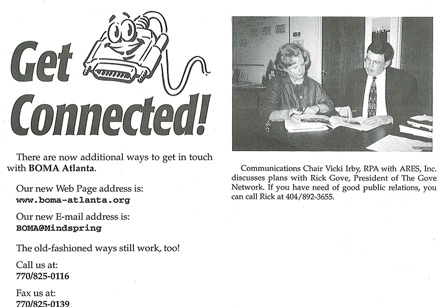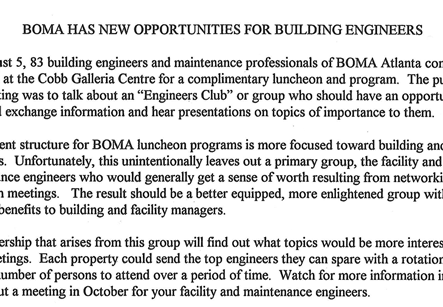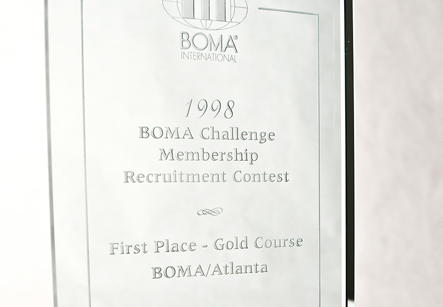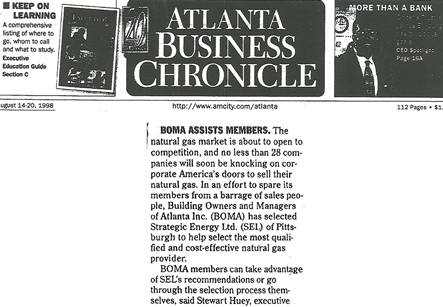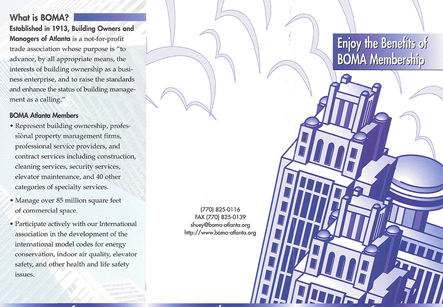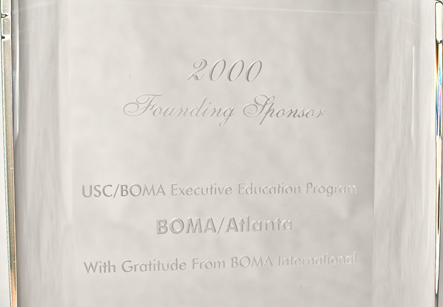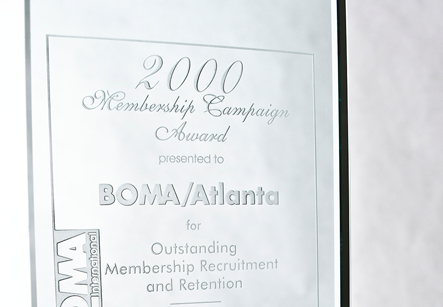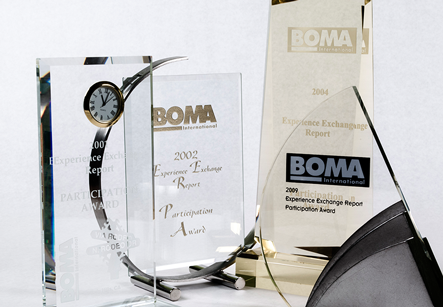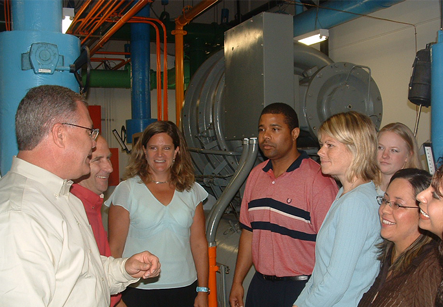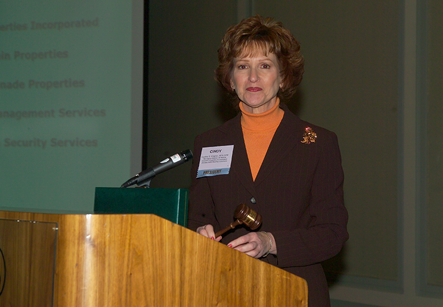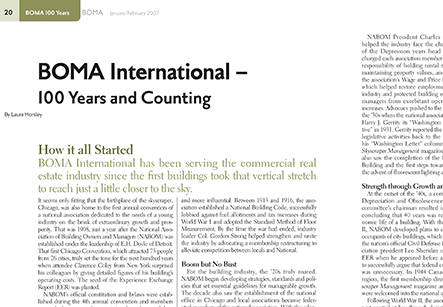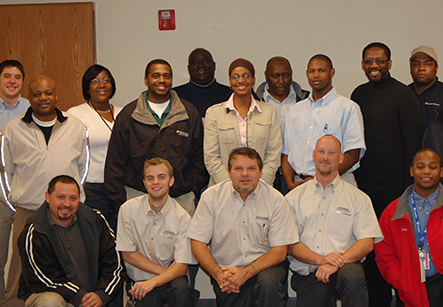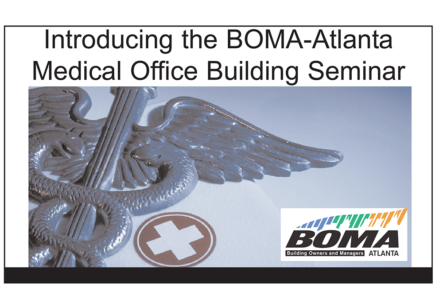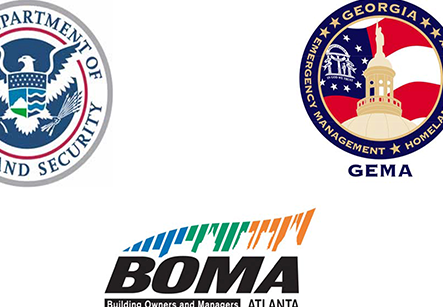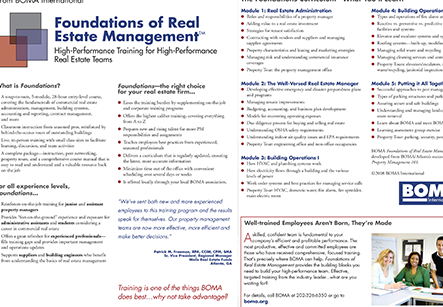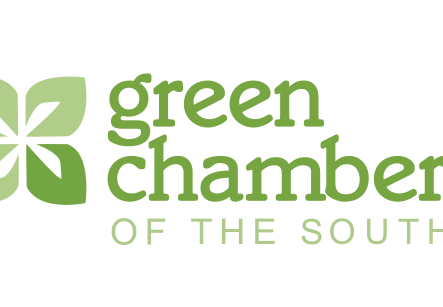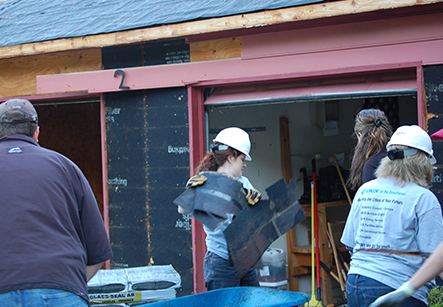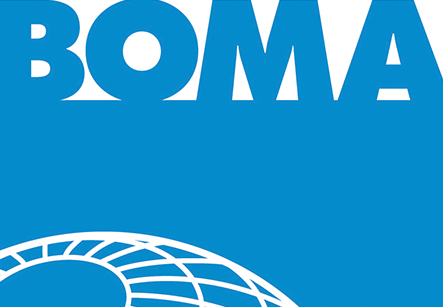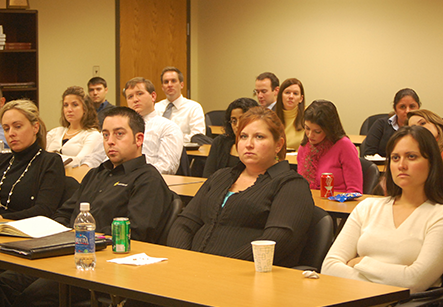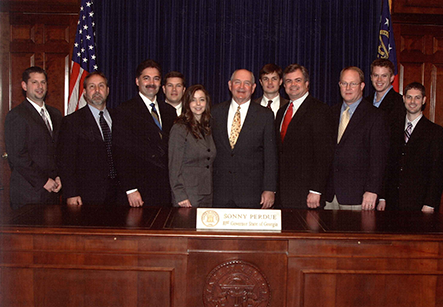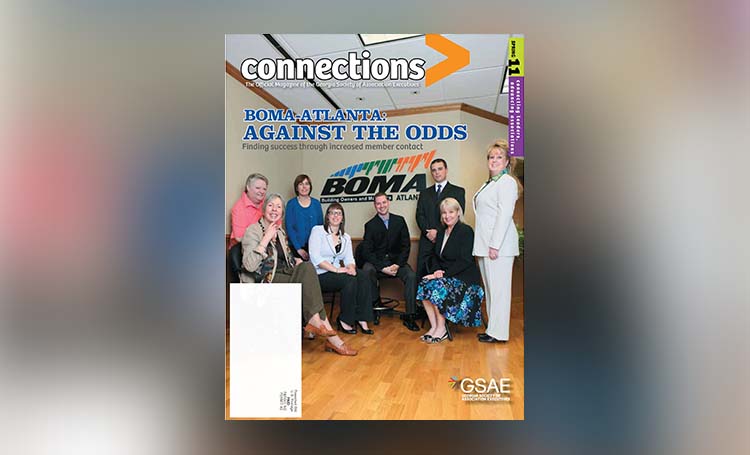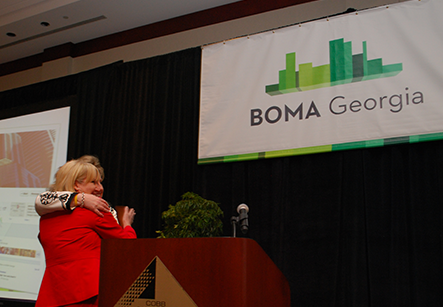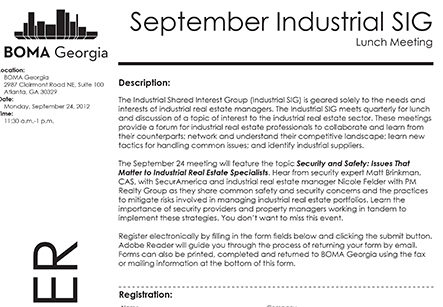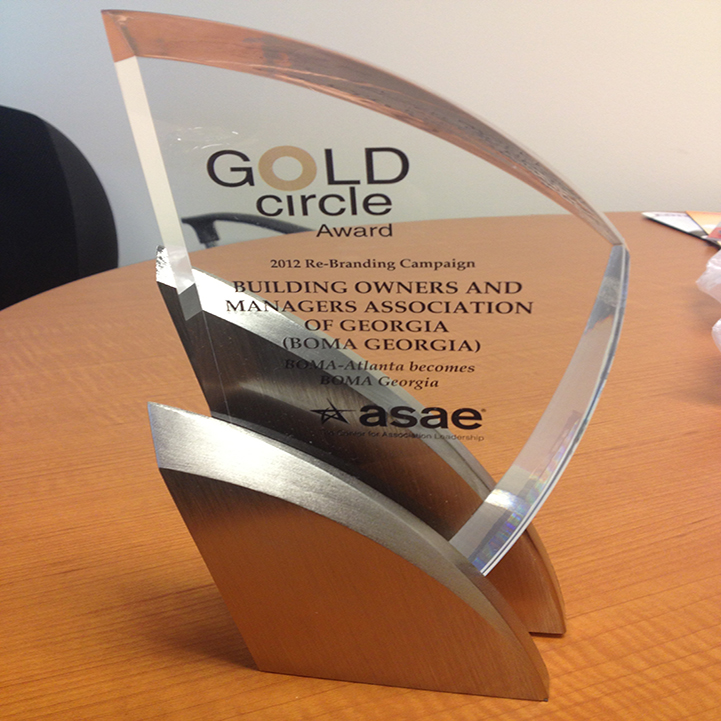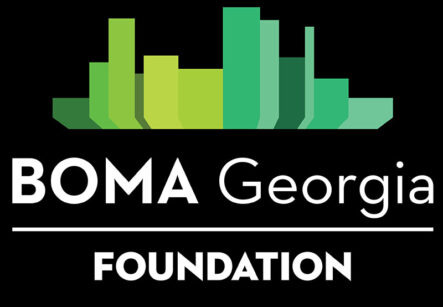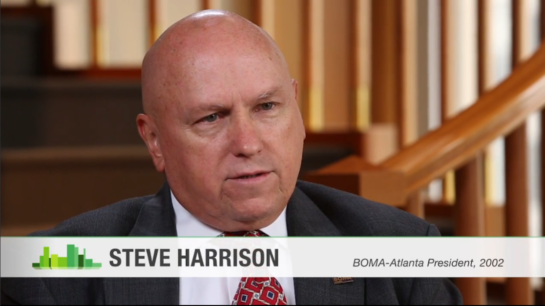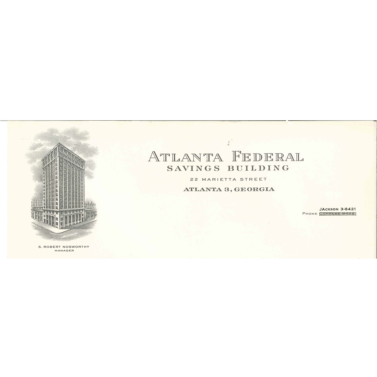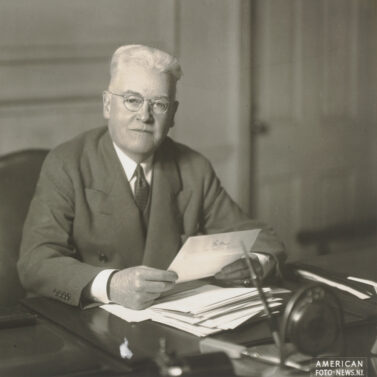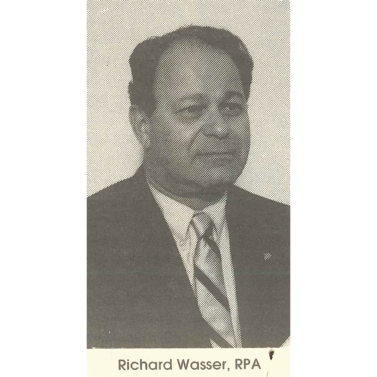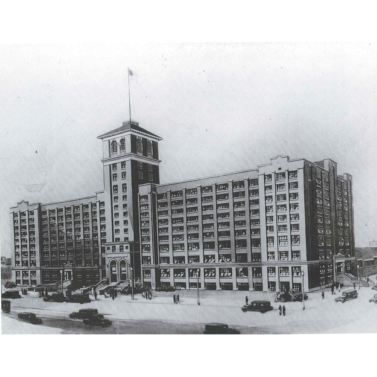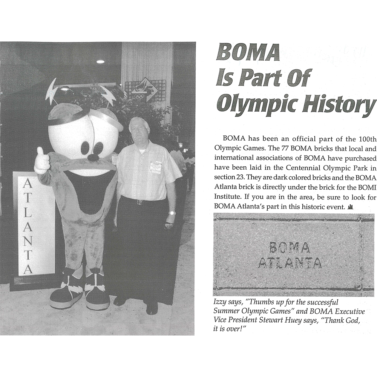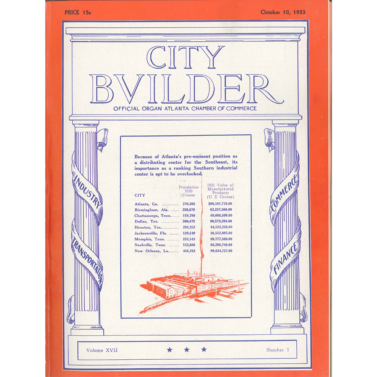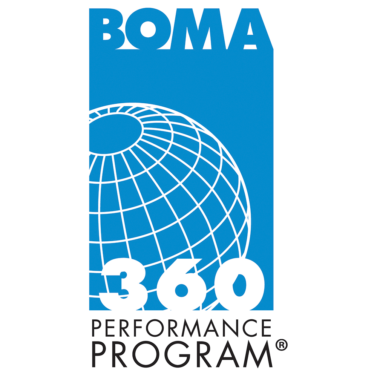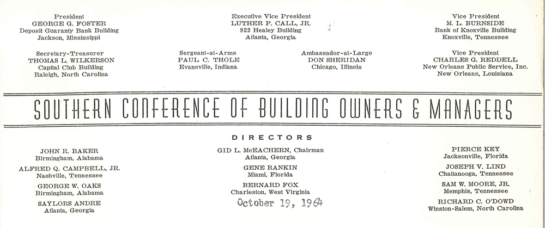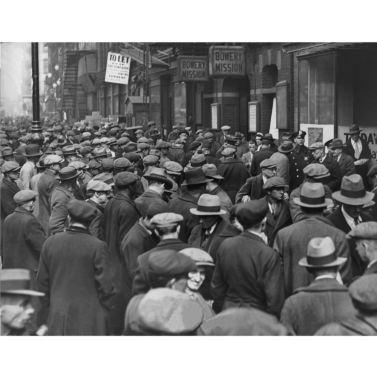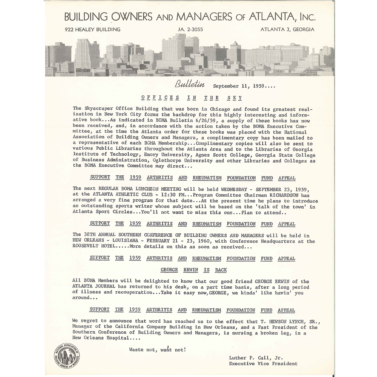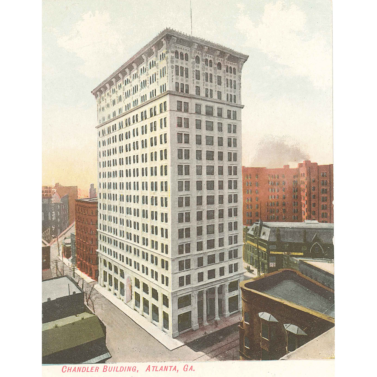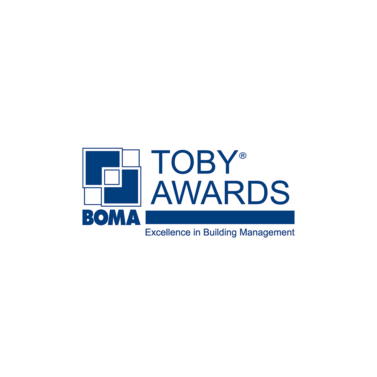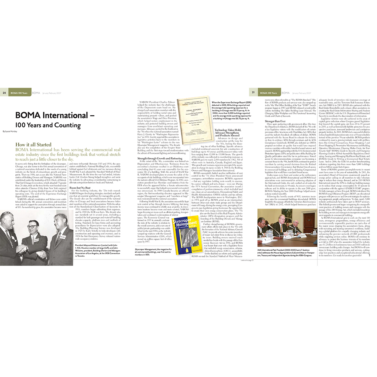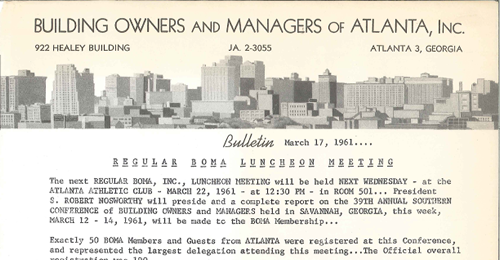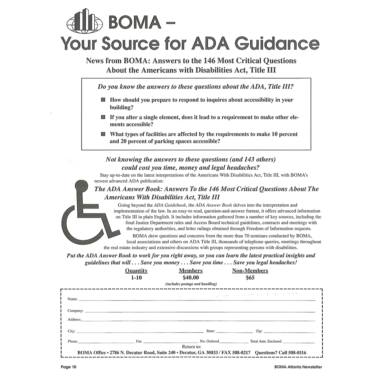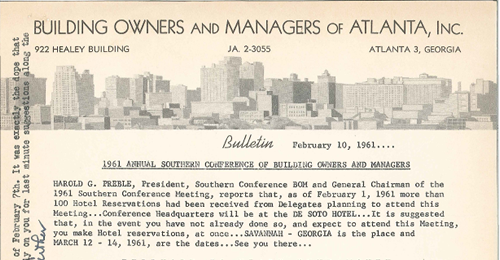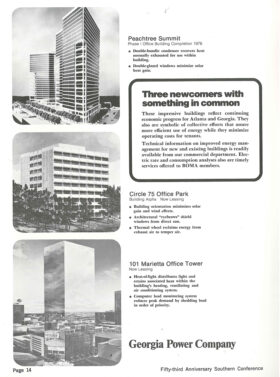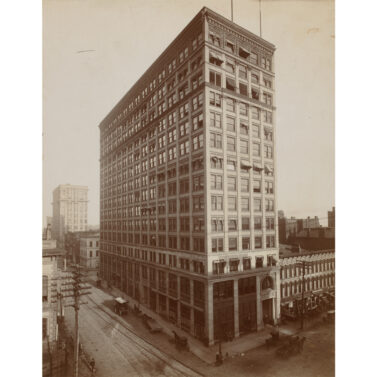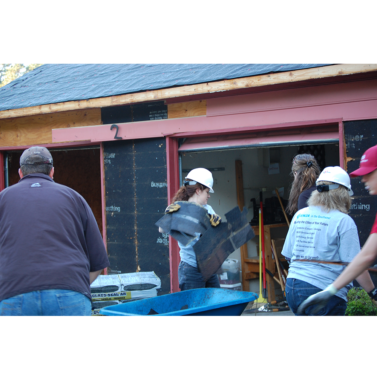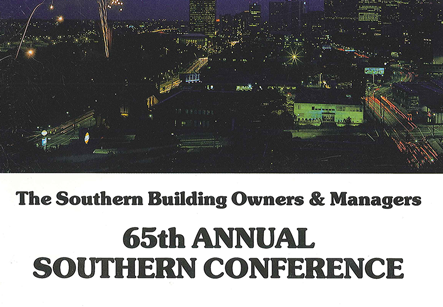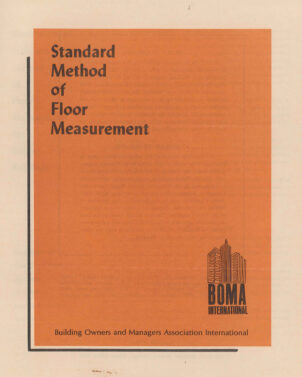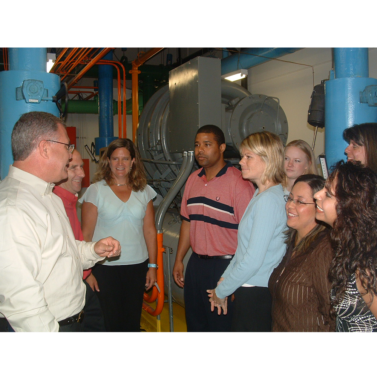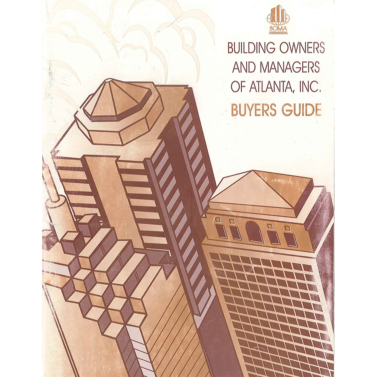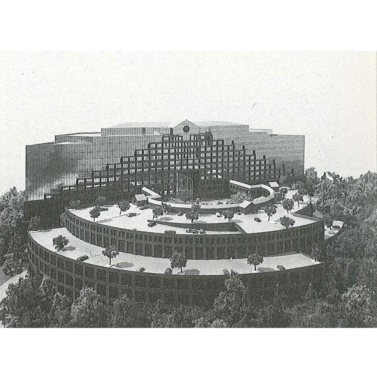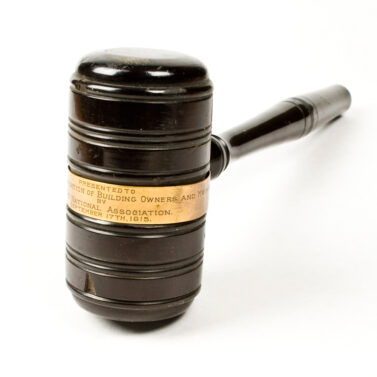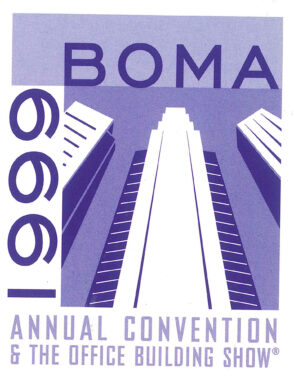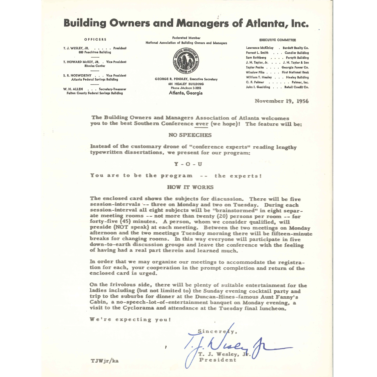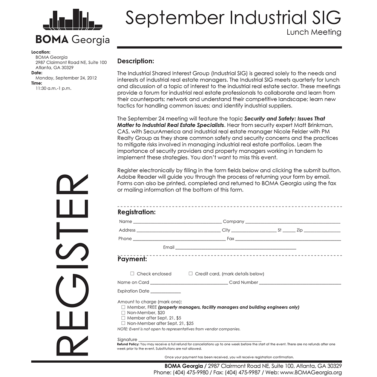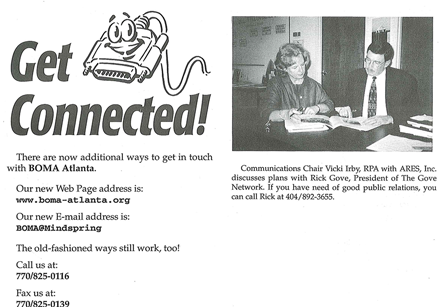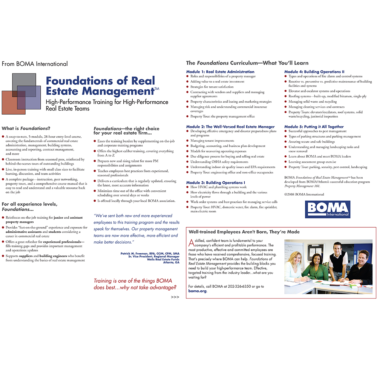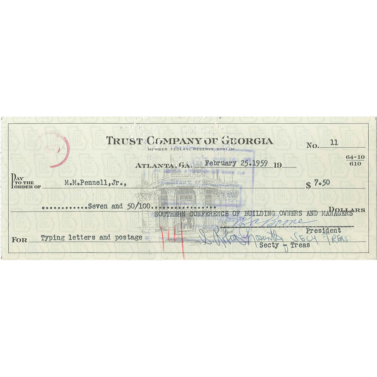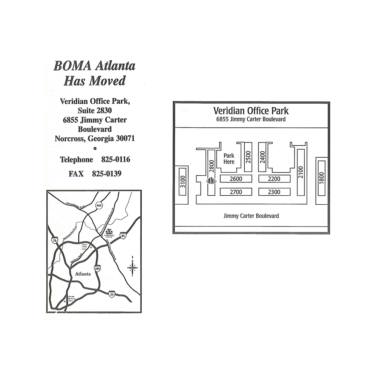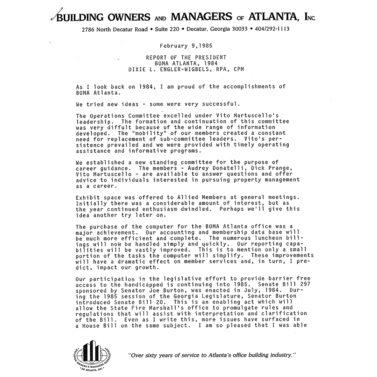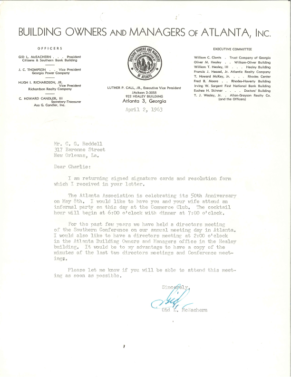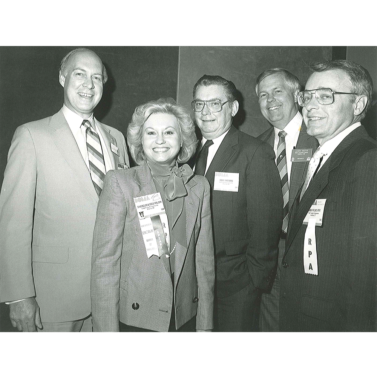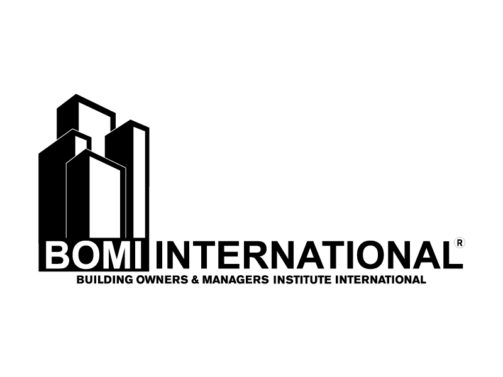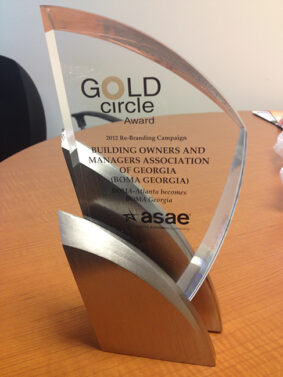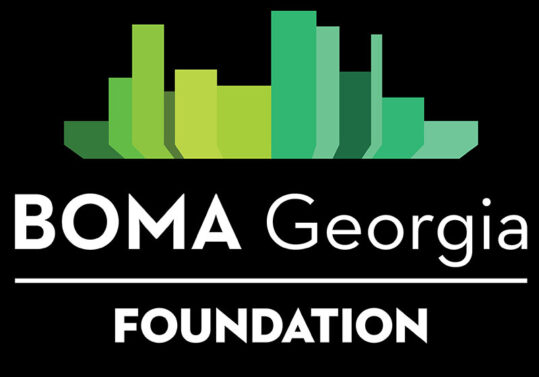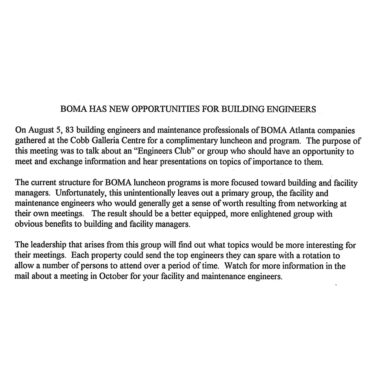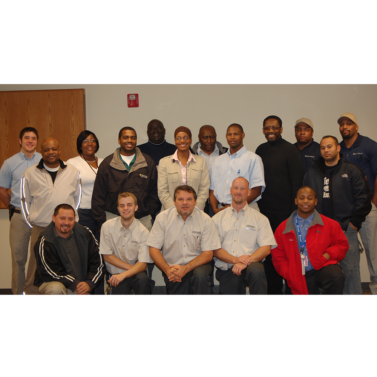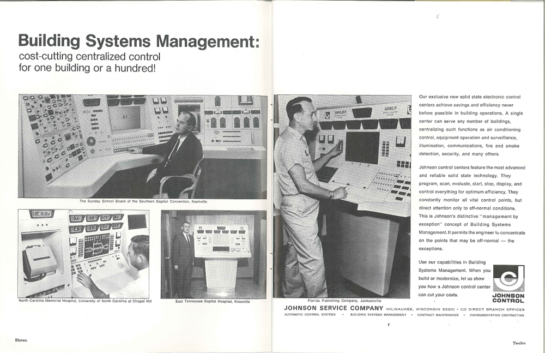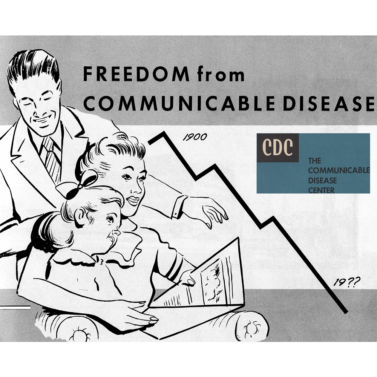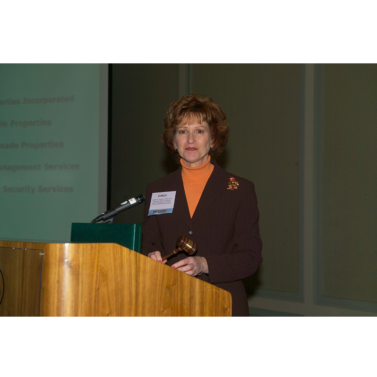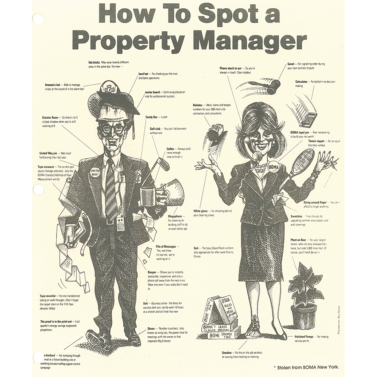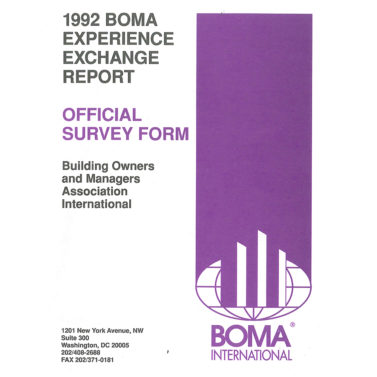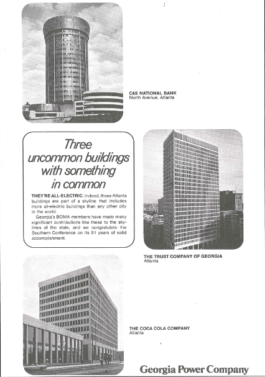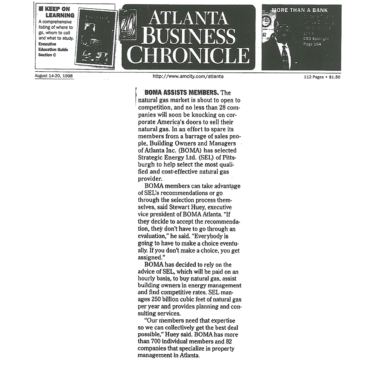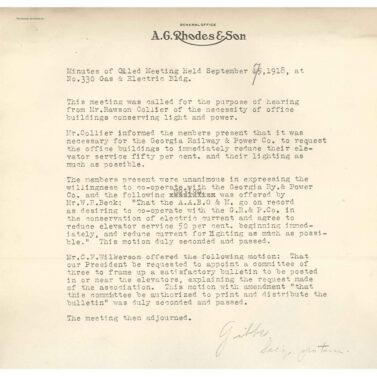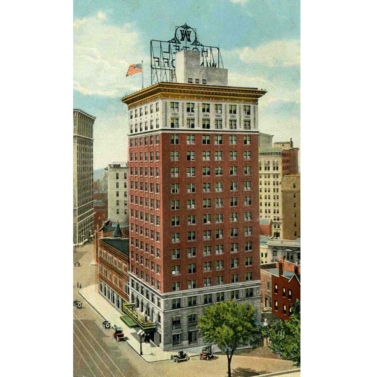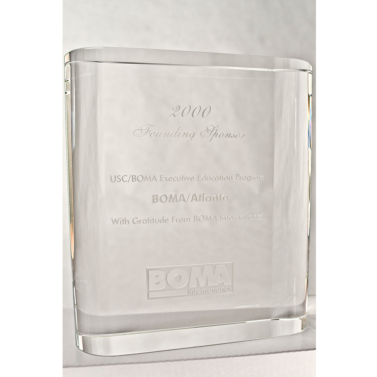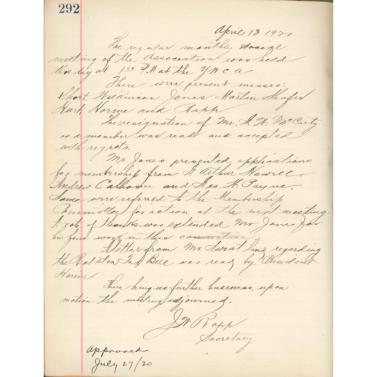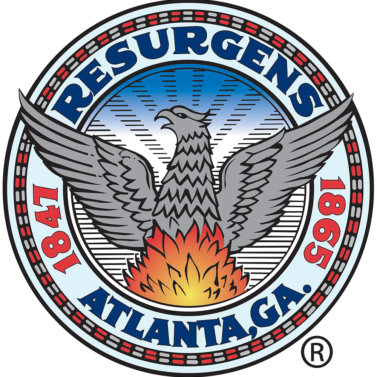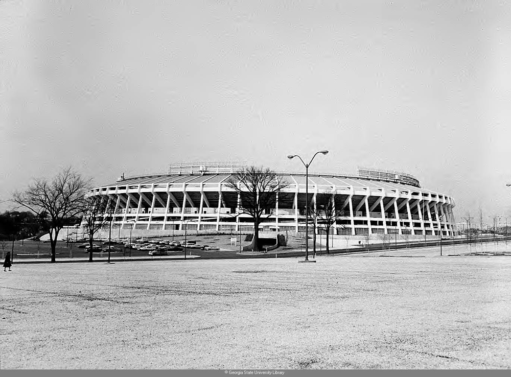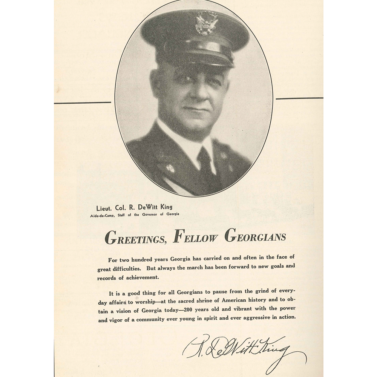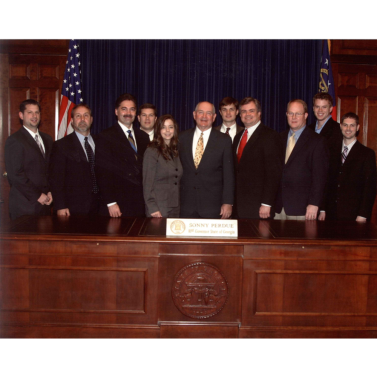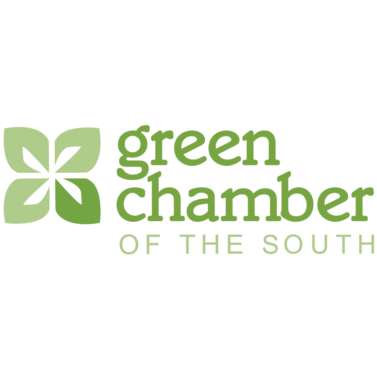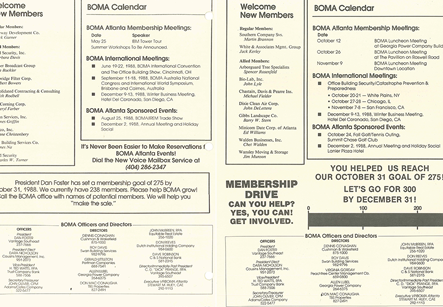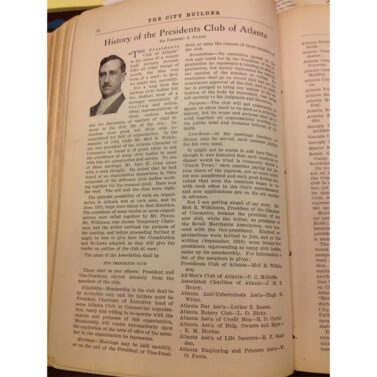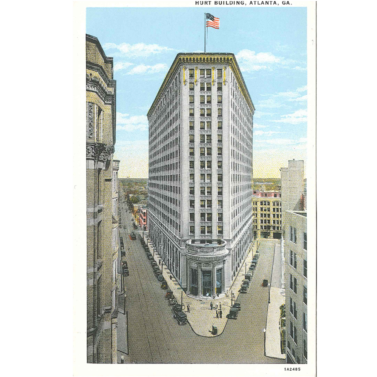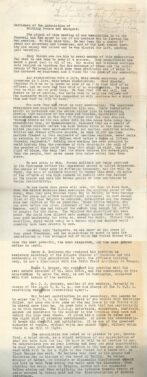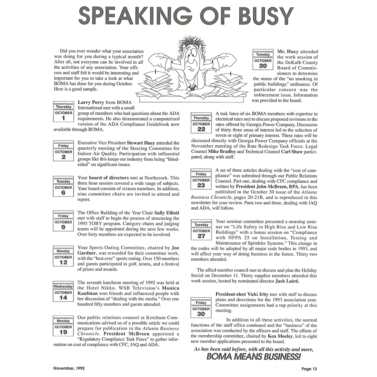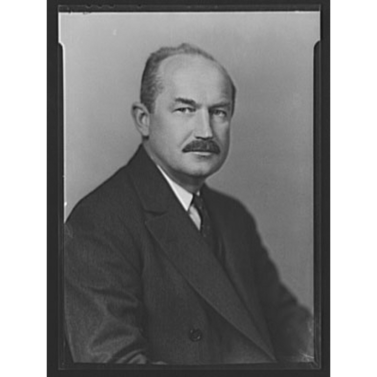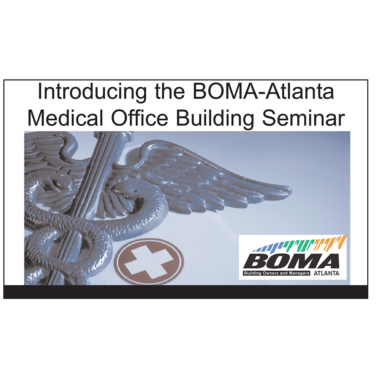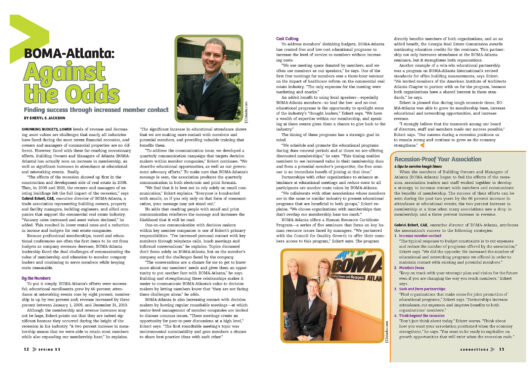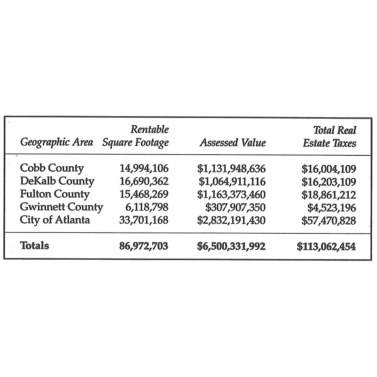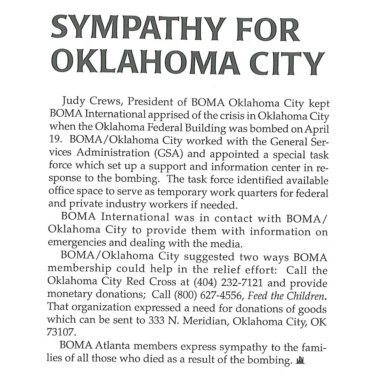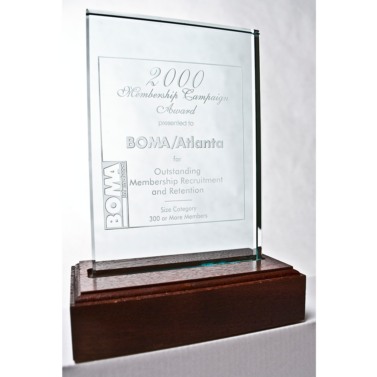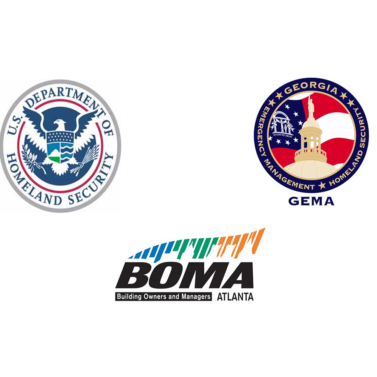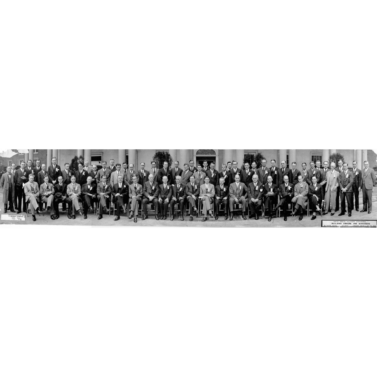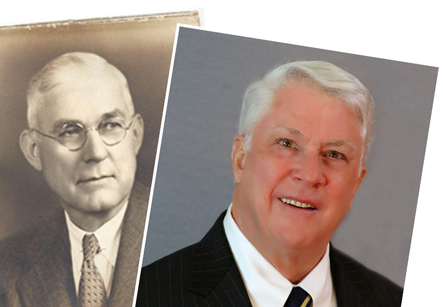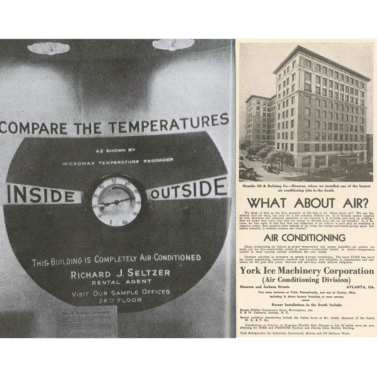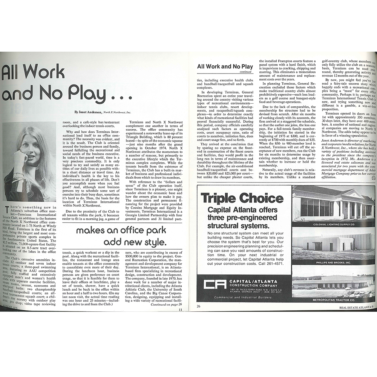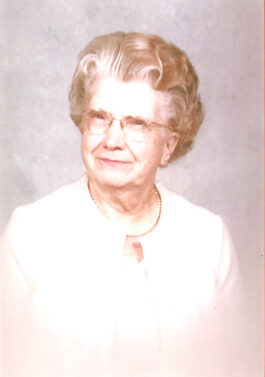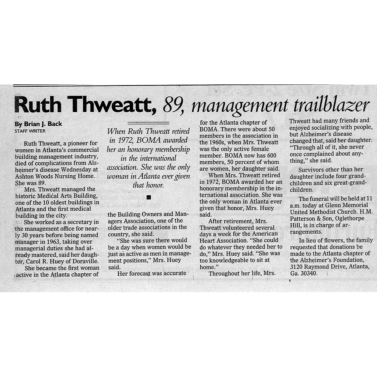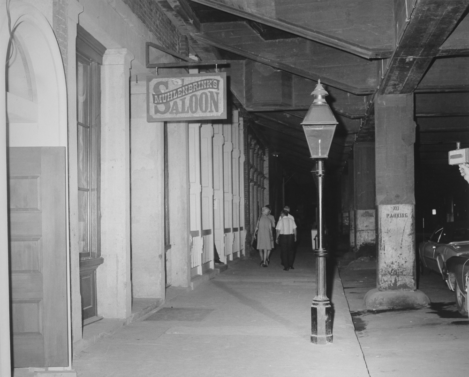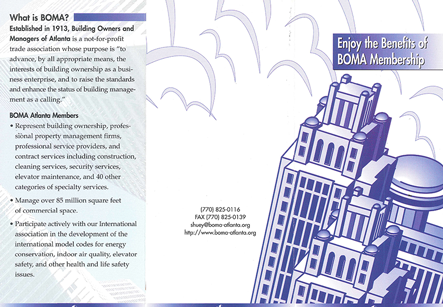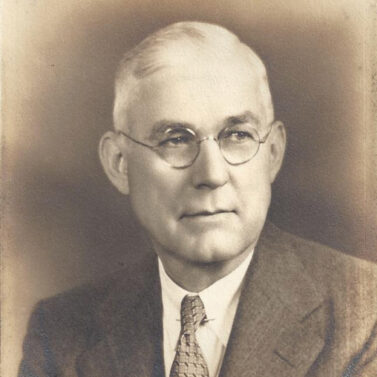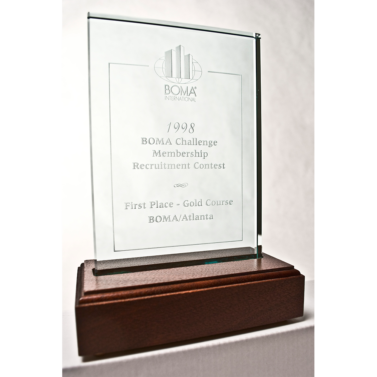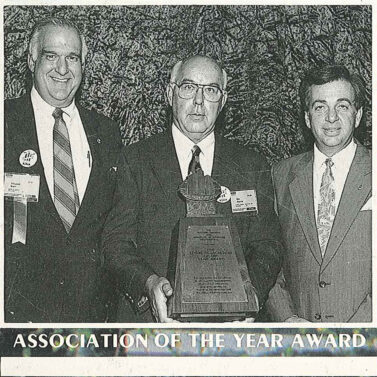ALLEN ENVISIONS BOMA
REP. WILKINSON'S FAMILY TIES
HUEY RECALLS BOMA BEGINNING
BOMA ORGANIZES
BOMA HOLDS FIRST BOARD OF DIRECTORS MEETING
BOMA OFFICE OPENS
WILKINSON, NATIONAL LEADER
BOMA-ATLANTA HOSTS CONVENTION
HORRINE INVITED TO PRESIDENT'S CLUB
IMPACT OF WWI ON BOMA-ATLANTA
ENERGY CONSERVATION IS KEY
BEST PRACTICES IN LEASING
FOCUS ON MEMBERSHIP
ATLANTA ATTRACTS BIG BUSINESS
ATLANTA ACQUIRES CANDLER FIELD
BOMA FACES GREAT DEPRESSION
LEADING LOCAL AND NATIONAL ECONOMIC RECOVERY
REGIONAL CONFERENCE HOSTED IN ATLANTA
GEORGIA & BOMA CELEBRATE MILESTONES
ATLANTA'S INDUSTRIAL ADVANTAGE
TALK OF THE TOWN: A / C
ATLANTA DEDICATES HURT PARK
WWII CHANGES MANAGEMENT FOCUS
CDC OPENS IN ATLANTA
FIRE AT HOTEL WINECOFF
BOMA-ATLANTA HOSTS SOUTHERN REGION
HURT BUILDING GETS A/C
AFS BUILDING: BOMA MEMBER
BOMA-ATLANTA MAINTAINS REGIONAL RECORDS
BOMA GIVES BACK
BOMA Makes EER Appeal
BOMA Conference in Savannah
BOMA is Family
BOMA-Atlanta Turns 50
THWEATT, 1ST FEMALE PROPERTY MANAGER MEMBER
Georgia Creates MARTA
BOMA Builds Leaders
Fulton Co. Stadium Constructed
Building Systems Management
Priority on Energy Savings
Underground Atlanta Opens
BOMI International Founded
1% MARTA Tax Approved
THWEATT, HONORARY BOMA INTERNATIONAL MEMBER
BOMA Standards Remain Best
Electric Heating Boom
Terminus Tennis Club Opens
BOMA Members Lead Conservation
ATLANTA HOSTS BOMA INTERNATIONAL
Allied Member Earns RPA
BOMA-ATLANTA’S 1ST FEMALE PRESIDENT
BOMA-ATLANTA PURCHASES COMPUTER
BOMA INTERNATIONAL LAUNCHES TOBYS
BOMA-ATLANTA HOSTS 1ST TRADE SHOW
BOMA WINS EER AWARDS
BOMA SOUTHERN CONFERENCE RETURNS TO ATLANTA
HAPPY 75TH ANNIVERSARY, BOMA-ATLANTA
BOMA-ATLANTA ENHANCES COMMUNICATION
Defining the Property Manager
Allied Service Directory Debut
Highest Member Count Attained
WINNER: BOMA LOCAL OF THE YEAR
BOMA-ATLANTA HOSTS CONVENTION
BOMA LEADS ADA COMPLIANCE
EPA CREATES ENERGY STAR®
EER CONTINUES GROWING
KEEPING COMMUNICATION OPEN
BOMA-ATLANTA CREATES STRATEGIC PLAN
TRADE SHOW GOES PRO
BOMA-ATLANTA OFFICE MOVES
OFFICE BUILDING IMPACT DEFINED
OKC BOMBING CHANGES SECURITY
TRADE SHOW GOES TO GALLERIA
BOMA-ATLANTA DEBUTS BUYER’S GUIDE
ATLANTA HOSTS OLYMPIC GAMES
BOMA-ATLANTA LAUNCHES WEBSITE
BUILDING ENGINEER CLUB CREATED
WINNER, MEMBERSHIP RECRUITMENT
ENERGY ALLIANCE FORMED
VALUE OF BOMA SHINES
BOMA-ATLANTA HOSTS INTERNATIONAL
FOCUS ON EXECUTIVE EDUCATION
OUTSTANDING MEMBER RECRUITMENT
EER AWARDS ABOUND
BOMA-ATLANTA CREATES PROPERTY MANAGEMENT 101
CHANGE TO STRATEGIC GOVERNANCE
BOMA INTERNATIONAL TURNS 100
BOMA HOSTS TERRORISM SYMPOSIUM
BUILDING ENGINEERING 101 UNVEILED
MEDICAL OFFICE PROGRAMS
PARTNERING FOR SECURITY
GLOBAL SUMMIT ON SOCIAL RESPONSIBILITY
BOMA-ATLANTA LICENSES PROPERTY MANAGEMENT 101
GREEN CHAMBER FOUNDED
BOMA SERVES THE COMMUNITY
BOMA 360 PERFORMANCE PROGRAM LAUNCHED
FOCUS ON RECYCLING
YOUNG PROFESSIONALS IN FOCUS
7-POINT CHALLENGE
GOVERNOR SEEKS BOMA’S INPUT
GREEN SUMMIT CREATED
MEMBERSHIP GROWTH GETS NOTICED
PERMITTING REFORM ADVOCATE
BECOMING BOMA GEORGIA
BOMA-ATLANTA INCORPORATES INDUSTRIAL
BRANDING EFFORT WINS NATIONAL AWARD
CELEBRATING 100 YEARS
100 YEARS OF BUILDING VALUE
100 YEARS OF GOVERNMENT ADVOCACY
100 YEARS OF COLLABORATION
100 YEARS OF INNOVATION
100 YEARS OF BOMA FAMILY
BUILDING A FOUNDATION
2020: COVID-19 Pandemic
ALLEN ENVISIONS BOMA
REP. WILKINSON'S FAMILY TIES
HUEY RECALLS BOMA BEGINNING
BOMA ORGANIZES
BOMA HOLDS FIRST BOARD OF DIRECTORS MEETING
BOMA OFFICE OPENS
WILKINSON, NATIONAL LEADER
BOMA-ATLANTA HOSTS CONVENTION
HORRINE INVITED TO PRESIDENT'S CLUB
IMPACT OF WWI ON BOMA-ATLANTA
ENERGY CONSERVATION IS KEY
BEST PRACTICES IN LEASING
FOCUS ON MEMBERSHIP
ATLANTA ATTRACTS BIG BUSINESS
ATLANTA ACQUIRES CANDLER FIELD
BOMA FACES GREAT DEPRESSION
LEADING LOCAL AND NATIONAL ECONOMIC RECOVERY
REGIONAL CONFERENCE HOSTED IN ATLANTA
GEORGIA & BOMA CELEBRATE MILESTONES
ATLANTA'S INDUSTRIAL ADVANTAGE
TALK OF THE TOWN: A / C
ATLANTA DEDICATES HURT PARK
WWII CHANGES MANAGEMENT FOCUS
CDC OPENS IN ATLANTA
FIRE AT HOTEL WINECOFF
BOMA-ATLANTA HOSTS SOUTHERN REGION
HURT BUILDING GETS A/C
AFS BUILDING: BOMA MEMBER
BOMA-ATLANTA MAINTAINS REGIONAL RECORDS
BOMA GIVES BACK
BOMA Makes EER Appeal
BOMA Conference in Savannah
BOMA is Family
BOMA-Atlanta Turns 50
THWEATT, 1ST FEMALE PROPERTY MANAGER MEMBER
Georgia Creates MARTA
BOMA Builds Leaders
Fulton Co. Stadium Constructed
Building Systems Management
Priority on Energy Savings
Underground Atlanta Opens
BOMI International Founded
1% MARTA Tax Approved
THWEATT, HONORARY BOMA INTERNATIONAL MEMBER
BOMA Standards Remain Best
Electric Heating Boom
Terminus Tennis Club Opens
BOMA Members Lead Conservation
ATLANTA HOSTS BOMA INTERNATIONAL
Allied Member Earns RPA
BOMA-ATLANTA’S 1ST FEMALE PRESIDENT
BOMA-ATLANTA PURCHASES COMPUTER
BOMA INTERNATIONAL LAUNCHES TOBYS
BOMA-ATLANTA HOSTS 1ST TRADE SHOW
BOMA WINS EER AWARDS
BOMA SOUTHERN CONFERENCE RETURNS TO ATLANTA
HAPPY 75TH ANNIVERSARY, BOMA-ATLANTA
BOMA-ATLANTA ENHANCES COMMUNICATION
Defining the Property Manager
Allied Service Directory Debut
Highest Member Count Attained
WINNER: BOMA LOCAL OF THE YEAR
BOMA-ATLANTA HOSTS CONVENTION
BOMA LEADS ADA COMPLIANCE
EPA CREATES ENERGY STAR®
EER CONTINUES GROWING
KEEPING COMMUNICATION OPEN
BOMA-ATLANTA CREATES STRATEGIC PLAN
TRADE SHOW GOES PRO
BOMA-ATLANTA OFFICE MOVES
OFFICE BUILDING IMPACT DEFINED
OKC BOMBING CHANGES SECURITY
TRADE SHOW GOES TO GALLERIA
BOMA-ATLANTA DEBUTS BUYER’S GUIDE
ATLANTA HOSTS OLYMPIC GAMES
BOMA-ATLANTA LAUNCHES WEBSITE
BUILDING ENGINEER CLUB CREATED
WINNER, MEMBERSHIP RECRUITMENT
ENERGY ALLIANCE FORMED
VALUE OF BOMA SHINES
BOMA-ATLANTA HOSTS INTERNATIONAL
FOCUS ON EXECUTIVE EDUCATION
OUTSTANDING MEMBER RECRUITMENT
EER AWARDS ABOUND
BOMA-ATLANTA CREATES PROPERTY MANAGEMENT 101
CHANGE TO STRATEGIC GOVERNANCE
BOMA INTERNATIONAL TURNS 100
BOMA HOSTS TERRORISM SYMPOSIUM
BUILDING ENGINEERING 101 UNVEILED
MEDICAL OFFICE PROGRAMS
PARTNERING FOR SECURITY
GLOBAL SUMMIT ON SOCIAL RESPONSIBILITY
BOMA-ATLANTA LICENSES PROPERTY MANAGEMENT 101
GREEN CHAMBER FOUNDED
BOMA SERVES THE COMMUNITY
BOMA 360 PERFORMANCE PROGRAM LAUNCHED
FOCUS ON RECYCLING
YOUNG PROFESSIONALS IN FOCUS
7-POINT CHALLENGE
GOVERNOR SEEKS BOMA’S INPUT
GREEN SUMMIT CREATED
MEMBERSHIP GROWTH GETS NOTICED
PERMITTING REFORM ADVOCATE
BECOMING BOMA GEORGIA
BOMA-ATLANTA INCORPORATES INDUSTRIAL
BRANDING EFFORT WINS NATIONAL AWARD
CELEBRATING 100 YEARS
100 YEARS OF BUILDING VALUE
100 YEARS OF GOVERNMENT ADVOCACY
100 YEARS OF COLLABORATION
100 YEARS OF INNOVATION
100 YEARS OF BOMA FAMILY
BUILDING A FOUNDATION
2020: COVID-19 Pandemic
1% MARTA Tax Approved
Atlanta citizens voted for a one-percent sales tax to fund the Metropolitan Atlanta Rapid Transit Authority (MARTA). While construction of the MARTA system didn’t begin until 1975, and the first rail service didn’t start until 1979, this was a pivotal point in the development of mass transportation in metro-Atlanta. During this time, BOMA represented the interests of building owners and managers throughout the political and public discussions of transportation issues, and was an advocate for economic development initiatives.
100 YEARS OF BOMA FAMILY
BOMA Georgia’s story begins in 1913 with a group of building owners (families) who came to form the Building Owners and Managers Association of Atlanta, a local chapter of BOMA International. Over the next 100 years, the association would face many challenges as it sought to grow membership and become essential to the success of professionals in the real estate industry. Through the decades, BOMA-Atlanta would grow to a membership exceeding 1,000 individuals and become a premiere association for education, advocacy, networking and the open exchange of ideas. These successes brought about the organization’s rebranding and statewide expansion to BOMA Georgia in 2012–one year prior to reaching its Centennial anniversary.
With all these changes, one thing has remained the same: BOMA is family.
100 YEARS OF BUILDING VALUE
BOMA Georgia has always been a place for members to grow their professional networks, gain new skills or become better at their jobs. However, it doesn’t take long until the professional relationships formed at BOMA become friendships.
These friendships and relationships have made BOMA the vibrant association that it is today and will continue to be over the next century. While the robust offerings in the way of education, professional resources and networking opportunities demonstrate BOMA’s ability to accelerate the career of real estate professionals in Georgia, the essential component that leads to the success of the association is the bond formed through lifetime relationships and friendships within the association. This is why BOMA Georgia celebrates 100 Years of Building Value.
Video sponsored by The Morley Companies.
100 YEARS OF COLLABORATION
A diverse membership has made BOMA Georgia the expansive and vibrant association that it is today. The partnerships that exist within BOMA between property professionals and allied product/service providers have long created success for the association. Allied members are considered integral to the mission of BOMA. Because of this, the association offers a range of opportunities for education, networking and exposure, allowing allied members to promote business, increase professional development and have a positive impact on the direction of the association. This collaboration between allied members and property professionals within BOMA has created a dynamic and growing membership that has achieved sustained success within the commercial real estate industry for 100 years.
100 YEARS OF GOVERNMENT ADVOCACY
From the early years, BOMA Georgia has always been involved in issues of economic development and codes compliance. Protecting Georgia’s commercial real estate industry through government advocacy remains a key tenant within the association.
Arising from a growing need for representation on important industry issues, a small group of volunteers has grown to a committee with more than 40 industry professionals that actively work and participate in the association’s advocacy efforts.
Advocacy is relationship building 101, and over the years BOMA has developed strong relationships in every level of government and continues to address the issues that matter most to the industry. Whether focused on water, transportation issues, environmental sustainability, codes compliance or businesses’ bottom line, the member volunteers and leaders in BOMA have remained committed to serving the interests of the industry. While the way the association has communicated on these issues may have changed over the years, BOMA Georgia continues to lead the industry forward making the best decisions for our community.
100 YEARS OF INNOVATION
BOMA Georgia did not thrive by simply existing during the last 100 years, but by leading innovation and change. The real estate industry was and is constantly evolving with new technologies and a changing market landscape. During the last 100 years; the association led the charge and is still the state’s premier association for commercial real estate professionals. Whether it’s being a leader by embracing emerging technology; meeting the needs of a multigenerational workforce; or encouraging the transition to high performance buildings, BOMA Georgia continues to move the industry forward providing the expertise, education, resources and tools necessary for its members to succeed.
Regardless of what changes and challenges face the real estate industry, BOMA remains a leader.
2020: COVID-19 Pandemic
COVID-19 was a global event that affected not just BOMA Georgia, but the broader real estate community. In March 2020, BOMA Georgia was the first BOMA to produce a national webinar on COVID-19, which was quickly followed by additional, complimentary resources developed by the BOMA Georgia Foundation. These resources included information on infectious disease control, operational savings during low occupancy, and tips for building re-entry. In total, there were over 100 videos and articles created by the association concerning the topic of COVID-19 that addressed issues such as indoor air quality, tenant relations, communication strategies, and security concerns to name a few.
7-POINT CHALLENGE
In 2009, BOMA International launched the 7-Point Challenge to reduce energy consumption in commercial buildings by 30 percent by 2012. The City of Atlanta soon joined BOMA in promoting the 7-point Challenge as a viable solution for building owners to improve energy performance in their buildings. This promotion by the city reinforced BOMA’s priority placed on suitability initiatives that are embraced by both the private and public sector. It also underscored BOMA-Atlanta’s leadership role in environmental sustainability and real estate within the city of Atlanta and beyond.
ALLEN ENVISIONS BOMA
Wanting Atlanta to host the BOMA National Convention, local businessman and Atlanta Convention Bureau president, Ivan E. Allen met with his Atlanta Chamber of Commerce colleagues, urging them to establish a local association affiliated with the national Building Owners and Managers Association. This action underscored the fact that a city with a BOMA presence was synonymous with a city that has aggressive economic growth plans. As a result, from the moment of its founding, BOMA-Atlanta was directly tied to advancing the economic growth of the state of Georgia.
Allied Member Earns RPA
In 1983, Richard Wasser becomes the first BOMA-Atlanta Allied Member to earn the Real Property Administrator (RPA) designation from the Building Owners and Managers Institute (BOMI) International. This accomplishment highlighted the growing importance of partnership and allied members and property professionals in BOMA.
Allied Service Directory Debut
Spanning two pages in the BOMA-Atlanta Newsletter, the Allied Member Service Directory was a new addition to the newsletter as of April 1988. Not only did this addition underscore the importance of the allied member segment to other BOMA members, it was also a valuable resource for building teams who wanted to work with suppliers of products and services who supported BOMA.
ATLANTA ACQUIRES CANDLER FIELD
For $94,400, the City of Atlanta purchased Candler Field, now the site of Hartsfield-Jackson Atlanta International Airport. For the five years prior to the purchase, the land at Candler Field was being leased to the city by Asa G. Candler. It handled 16 passenger and airmail flights daily. While those involved may not have realized at the time what this purchase would mean for Georgia’s future, BOMA quickly recognized the significant impact Candler Field would have on economic and real estate development and how it would position Atlanta as an international business leader.
ATLANTA ATTRACTS BIG BUSINESS
Emblematic that by the mid-1920s Atlanta had established itself as an attractive Southern city in which to do business, Sears, Roebuck and Co. constructed a 2.1 million-square-foot facility on Ponce de Leon Ave., in what is known as the Old Fourth Ward neighborhood. Symbolic of the fluctuation in the commercial real estate market conditions and trends that BOMA has helped its members withstand, this iconic Atlanta building has transformed from a retail space from 1926 until 1987; to a government building from 1990 until 2010 under the name City Hall East; to being renovated as the mixed-used development Ponce City Market in 2011.
ATLANTA DEDICATES HURT PARK
Prominent Atlanta real estate and streetcar entrepreneur Joel Hurt was responsible for developing Atlanta’s first skyscraper, the Equitable Building. However, his masterpiece development in downtown Atlanta is known as the Hurt Building, which was built in 1913 and is still a BOMA Georgia member building today. In 1940, Trust Company donated land to the City of Atlanta, which was made into a memorial park dedicated to the memory of Hurt. Aptly named Hurt Park, its dedication underscored the importance of commercial real estate pioneers and BOMA members to the development of Atlanta.
ATLANTA HOSTS BOMA INTERNATIONAL
More than 60 years since BOMA International first hosted its conference in Atlanta, the city was once again host to the conference in 1976. The involvement of BOMA-Atlanta was instrumental in bringing the conference back to Atlanta. The return of the conference emphasized Atlanta’s reputation as a major player in the burgeoning commercial real estate industry.
ATLANTA HOSTS OLYMPIC GAMES
Atlanta was home to 10,000 athletes and approximately 2 million visitors from around the world for 17 days during the 1996 Summer Olympic Games. While this was a tremendous economic boon to the city and its economic development prospects, how the convergence of throngs of people upon the city would impact buildings was among the top concerns of BOMA and the commercial real estate community. How will transportation and traffic congestion affect deliveries of goods and arrival of tenants and building employees? With extended retail hours, should additional building security be considered? Not only did BOMA-Atlanta assist members in preparing for the games through increased communications and topic-specific luncheons; BOMA-Atlanta Executive Vice President Stewart Huey represented the association on the Atlanta Regional Commission’s advisory committee, which produced an operational plan for the Olympic Transportation System. During one of Atlanta’s most historic moments, BOMA-Atlanta was there helping its members and its home city experience ultimate success.
ATLANTA’S INDUSTRIAL ADVANTAGE
As illustrated by the cover of the Atlanta Chamber of Commerce’s October 10, 1933 edition of City Builder, Atlanta was developing quickly and pulling ahead of competing Southern cities. As a result, it became home to the industrial sites of many large companies, such as Chevrolet. This growth in industrial real estate provided opportunities for BOMA members to diversify their property management skills beyond multi-tenant commercial office to industrial real estate.
BECOMING BOMA GEORGIA
Years of vision and strategic planning led to the moment on May 23, 2012 when then President Judi Sponsel and Immediate Past President Linda Beauchamp announced the organization’s official transition from BOMA-Atlanta to BOMA Georgia in front of more than 600 industry professionals at the May BOMA Trade Show Luncheon. During the prior years, the association performed studies to determine if expanding to become a statewide organization was feasible and valuable for the current membership and also if services were needed in areas outside of the metro Atlanta market. After considering the studies at its strategic planning retreat, the 2011 BOMA-Atlanta Board of Directors made the decision to transform the association to become statewide. The change was later unanimously supported by the membership. The decision to become BOMA Georgia enabled the organization to offer a wider reach of education and networking opportunities and to focus on the economic development and government advocacy needs of the entire state of Georgia.
BOMA 360 PERFORMANCE PROGRAM LAUNCHED
In 2009, BOMA International launched the BOMA 360 Performance Program, the real estate industry’s first holistic approach to building certification, recognizing buildings for applying best practices in six major areas of building operations and management: building operations and management; life safety, security and risk management; training and education; energy; environmental sustainability; and tenant relations and community involvement.
BOMA FACES GREAT DEPRESSION
With the stock market crash of October 1929, the Great Depression began. Declining real estate values, rising unemployment and other economic issues crippled the U.S. economy. During this time, BOMA-Atlanta served as an invaluable resource for real estate professionals. In the face of bleak market conditions, members of BOMA relied on one another for uplifting conversation and information sharing that would help solve industry-wide issues, and BOMA provided educational programs designed to help the real estate industry cope with the difficult economic environment.
BOMA HOSTS TERRORISM SYMPOSIUM
On January 17, 2008, BOMA-Atlanta partnered with the Georgia Emergency Management Agency (GEMA) through the Homeland Security Task Force, and the Greater Atlanta Chapter of the American Society of Industrial Security (ASIS) to co-produce a terrorism symposium. The event sold out with more than 400 attendees at the Georgia World Congress Center. This was also the first of a multi-year partnership between BOMA-Atlanta, ASIS and various law enforcement agencies to co-produce an annual day-long safety and security summit. Building this partnership highlighted BOMA’s role as the real estate leader in safety and security within the state of Georgia.
BOMA INTERNATIONAL LAUNCHES TOBYS
BOMA International created a recognition program known as The Office Building of the Year (TOBY) Awards to salute excellence in the office building industry. The first TOBY competition consisted of 23 regional entries in four categories: Under 100,000 Square Feet; 100,000-500,000 Square Feet; Over 500,000 Square Feet; and Historical Buildings. The TOBY Awards competition began modestly, but would grow into a prestigious international program recognizing more than just office buildings, as reflected by a name change in 2011 to The Outstanding Building of the Year Awards.
BOMA INTERNATIONAL TURNS 100
Founded in 1907 as the National Association of Building Owners and Managers (NABOM), the now international organization thrived nearly from the start, providing members of the commercial real estate industry opportunities to network, become educated about building operations and maintenance, and advocate for the best interests of real estate. For example, within its first few years, NABOM established a National Building Code, successfully lobbied against fuel allotments and tax increases during WWI, and adopted the still relevant Standard Method of Floor Measurement. Fast forward 100 years, BOMA International still exists to work with local BOMA affiliates worldwide to promote the interests of the industry while focusing on hot button issues such as emergency preparedness, energy efficiency and suitability, technology and workforce development.
BOMA is Family
BOMA members develop deep and meaningful relationships with each other and with the association. Over time, these relationships find a healthy professional-personal blend and create a bond expressed as the “BOMA family.” This strong connection is illustrated in the 1961 issue of the BOMA-Atlanta Bulletin where the association expressed its condolences about the loss of a past president’s wife. This gesture shows how important fostering a family-like experience has been to members. BOMA has truly always been a family.
BOMA LEADS ADA COMPLIANCE
After the passage of the Americans with Disabilities Act (ADA) in 1990, BOMA International created an extensive library of ADA compliance materials and launched a seminar series which positioned BOMA as an invaluable resource for real estate professionals who were implementing changes based on the new law. These efforts, combined with BOMA’s legislative advocacy program, further solidified BOMA’s long-standing position as the leading real estate association in education and advocacy.
BOMA Makes EER Appeal
BOMA International’s Experience Exchange Report (EER) was commercial real estate’s most trusted and comprehensive benchmarking resource. At its peak decades later, the EER included operational data from nearly a billion square feet of space across the United States and Canada. The EER became a robust analysis tool for a century because members were strongly encouraged to submit their data to improve accuracy of statistics for the industry, as illustrated in the February 10, 1961 edition of the BOMA-Atlanta Bulletin.
BOMA Members Lead Conservation
As depicted in this 1975 Georgia Power Company advertisement, BOMA buildings were not only adding to the growing Atlanta skyline, but they were also being built and operated in an environmental and fiscally responsible way. BOMA member buildings employed cutting edge technology such as the use of double-bundle condensers, double-glazed windows, efficient building orientation, computer-operated load management systems and other energy-saving techniques. Buildings operated by BOMA member companies have a long-standing commitment environmental sustainability and to lowering operating costs for the tenants, while conserving contributing to the aesthetic beauty and economic progress of the city and state.
BOMA OFFICE OPENS
BOMA-Atlanta opened its first office in the Empire Building, known in later year as the C&S Bank headquarters, at 35 Broad Street in downtown Atlanta. Locating BOMA’s office in the central business district underscored the association’s role in economic development and in leading and growing the real estate industry.
BOMA ORGANIZES
BOMA-Atlanta held a meeting to officially organize the local association and become affiliated with BOMA National. This meeting set the stage for what the association would become in subsequent years. Presiding over the organizational meeting was local businessman and Atlanta Convention Bureau president, Ivan E. Allen. It was also at this meeting that C.F. Wilkinson was elected BOMA-Atlanta’s first official president.
BOMA SERVES THE COMMUNITY
BOMA-Atlanta held its first annual construction project on an April 24, 2009 to strengthen the metro Atlanta community. Working with HomeAid Atlanta, more than 125 BOMA members rehabilitated a building operated by Tapestry Youth Ministries, a nonprofit organization serving teenage mothers who are at risk of becoming homeless. The construction project showcased BOMA’s commitment to serving the community by leveraging the unique skills and relationships of its members.
BOMA SOUTHERN CONFERENCE RETURNS TO ATLANTA
BOMA-Atlanta highlighted the economic development of Georgia by bringing real estate professionals and other business executives to Atlanta in 1987 for the BOMA Southern Region Conference. The conference, held at the Marriott Marquis in downtown Atlanta, provided education and networking opportunities for attendees and also showcased the growing real estate industry in Atlanta and throughout the state of Georgia. The meeting marked the first time in 30 years that Atlanta had played host to the BOMA Southern Region Conference.
BOMA WINS EER AWARDS
BOMA-Atlanta was recognized every year from 1986 through 1989 with BOMA International’s Top Ten Award for participation in the Experience Exchange Report (EER). The EER, established in 1920, was commercial real estate’s most trusted and comprehensive income and expense benchmarking resource, until the program was discontinued in 2020. BOMA-Atlanta’s high participation rate amongst member buildings increased the accuracy and comprehensiveness of data collected within the state of Georgia.
BOMA-ATLANTA CREATES PROPERTY MANAGEMENT 101
In 2003, BOMA-Atlanta launched a new educational course designed to assist those entering the commercial real estate field. Property Management 101 was created as a five-day class designed to teach participants the many facets of building management through classroom-style learning, interaction with industry professionals, and behind-the-scenes building tours. The course covered a variety of topics, including the professional life of a property manager, building systems, building operations, accounting and reporting, and contract administration.
BOMA-ATLANTA CREATES STRATEGIC PLAN
One of the cornerstones of a successful and enduring association is the creation—and diligent use of a long-range strategic plan. In 1994, BOMA-Atlanta developed its first strategic plan. Implementation of the plan created the foundation for the association’s continued growth, value, and reputation within the real estate industry.
BOMA-ATLANTA DEBUTS BUYER’S GUIDE
Property managers, facility managers and building engineers understand the value of having the right vendor partners—known in BOMA as allied members. In 1996, the BOMA-Atlanta Board of Directors commissioned members of the BOMA Allied Council to partner with staff to write and publish the first edition of the BOMA-Atlanta Buyers Guide. The guide detailed what is important for building managers to know, ask and understand when evaluating products and services and also included the contact information for allied members.
BOMA-ATLANTA ENHANCES COMMUNICATION
Finding and perfecting effective vehicles of communication is an essential part of keeping members informed of BOMA-Atlanta programs and engaged in the association. In 1988, BOMA-Atlanta expanded its print newsletter to be distributed monthly. This allowed the organization to share information with members more frequently, resulting in increased member involvement. Placing importance on written communications to members also laid the groundwork for the creation of future communication vehicles including a quarterly magazine, website, faxes and email.
BOMA-ATLANTA HOSTS 1ST TRADE SHOW
BOMA-Atlanta hosted its first trade show on a vacant floor of the Wildwood building in metro-Atlanta in 1985. Championed by member Dara Nicholson—who became BOMA’s second female president in 1989—the purpose of the table-top trade show was twofold: 1) it gave property professionals the chance to show appreciation for the products and partnership of allied members; and 2) it showcased vacant spaces in metro-Atlanta buildings, bringing the properties increased exposure. BOMA-Atlanta’s trade show later grew to become the largest annual gathering of property managers, facility managers, asset managers, and building engineers in Georgia, connecting real estate professionals with product and service providers to learn, network, and improve the efficiency and profitability of real estate assets.
BOMA-ATLANTA HOSTS CONVENTION
In 1989, The BOMA International Conference came back to Atlanta for the first time since 1976. A long history of positive partnership between BOMA-Atlanta and BOMA International was instrumental in bringing the conference back to Atlanta and emphasized the strength of BOMA-Atlanta’s relationship with its international affiliate. The conference also gave those visiting a chance to see tremendous growth within the city and why Atlanta held the reputation as a major player in the commercial real estate industry, not just in the Southeast, but on the national level as well.
BOMA-ATLANTA HOSTS CONVENTION
BOMA-Atlanta hosts the BOMA National Convention. The Piedmont Hotel, which was demolished in the 1960s and is now the site of the Equitable Building, served as convention headquarters. According to meeting minutes, “The Convention was conceded by all to be the largest attended, the most enjoyable and the very best in every way ever held by the National Association.” Even in its early years, BOMA-Atlanta proved to be a terrific partner with BOMA National, now BOMA International. Being the host location to the National Convention not only brought more acclaim to Atlanta as a destination city, it also solidified BOMA-Atlanta as a leader among the BOMA affiliates throughout the nation.
BOMA-ATLANTA HOSTS INTERNATIONAL
Having just hosted the Centennial Olympic Games, Atlanta’s popularity as both a business and tourism destination was soaring. BOMA International agreed, as they chose Georgia’s capital city as the site for the 1999 BOMA International Conference. Kicking the festivities off at Atlanta’s iconic music venue, the Tabernacle, BOMA-Atlanta welcomed real estate professionals from around the world showcased the growing metro-Atlanta skyline.
BOMA-ATLANTA HOSTS SOUTHERN REGION
BOMA has always looked for new, innovative ways to train and educate real estate professionals. In 1956, BOMA-Atlanta hosted the BOMA Southern Region Conference. Rather than providing educational programs in lecture format, which was typical at the time, the association provided an innovative opportunity for meeting attendees to create their own interactive educational discussions.
BOMA-ATLANTA INCORPORATES INDUSTRIAL
Having established shared interest groups in the areas of medical office, green real estate, and young professionals, BOMA-Atlanta saw increasing demand for education and networking opportunities specifically tailored to industrial property managers, building engineers and asset managers. On September 24, 2012, the Industrial Shared Interest Group (SIG) was launched by hosting a lunch meeting focused on the topic of “Security and Safety: Issues that Matter to Industrial Real Estate Specialists.” Attendees learned about common safety and security concerns related to industrial properties and strategies to help mitigate the risks that arise from those issues within industrial portfolios. Creation of the Industrial SIG underscored the priority that BOMA places on offering relevant information and educational opportunities to its members so they can operate their buildings more knowledgeably and efficiently.
BOMA-ATLANTA LAUNCHES WEBSITE
As the desktop computer and other personal technology became increasingly popular and common in the workplace and at home, BOMA-Atlanta needed to find new ways to reach people. In an effort to create additional connections with its members, BOMA-Atlanta launched a website and created an email account in 1997. Of course, since BOMA has always been sensitive to its members’ feelings about rapid change, the announcement about new methods of communication came with a disclaimer that, “the old- fashioned ways still work, too!” BOMA has always placed emphasis on reaching its members by way of the most convenient and effective methods available.
BOMA-ATLANTA LICENSES PROPERTY MANAGEMENT 101
After its successful launch in 2003 and subsequent years of popularity among property professionals in the metro Atlanta area, Property Management 101 gained interest from several other BOMA associations throughout the nation. The demand for such course material led to BOMA-Atlanta licensing PM 101 to BOMA International, which further developed it into the Foundations of Real Estate Management course. The foundations course went on to be one of BOMA International’s most successful continuing education programs and was taught not just in the United States – but internationally as well. This also marked another first for BOMA-Atlanta, as the association became the first BOMA affiliate to license intellectual property to BOMA International.
BOMA-ATLANTA MAINTAINS REGIONAL RECORDS
BOMA-Atlanta/BOMA Georgia has long been a leader in the BOMA Southern Region. For decades, the association kept the region’s financial and meeting records. This close relationship with the Southern Region provided unique leadership opportunities for members.
BOMA-ATLANTA OFFICE MOVES
By 1994, BOMA-Atlanta had approximately 550 members; record-setting attendance at luncheon meetings; a trade show with more exhibitors than ever before; sold out networking events; a series of successful seminars on topics vital to property management; and designed a strategic long-range plan. With all of these accomplishments, it was time to move BOMA-Atlanta headquarters to a new office space in Norcross, Ga. The new facility featured a conference center that could seat 40 students, audio-visual capabilities for meetings, and a café only four doors away. This move, and the amenities that came with it, signified the tremendous growth seen by BOMA in recent years, while forecasting the success that was to come in the future.
BOMA-ATLANTA PURCHASES COMPUTER
With technology moving at warp speed in the modern world, it’s hard to believe computers have not always been essential to doing business. In 1984, the BOMA-Atlanta office took a huge step into the age of technology when it purchased its first computer in an attempt to improve member service and communications. As BOMA-Atlanta President Dixie Engler-Wigbels, RPA, CPM, stated in a memo to the membership, the purchase was, “…a major achievement. Our accounting and membership data base will be much more efficient and complete. These improvements will have a dramatic effect on member services and, in turn, I predict, impact our growth.”
BOMA-Atlanta Turns 50
In 1963, BOMA-Atlanta celebrated five decades of advancing the real estate industry. As illustrated in this letter, BOMA-Atlanta President Gid McEachern enthusiastically invited C.G. Reddell and his wife to the anniversary celebration at the Commerce Club in Atlanta. Personal letters such as these were sent to members and their spouses encouraging them to attend the celebration, serving as a reminder of how important family is to BOMA.
BOMA-ATLANTA’S 1ST FEMALE PRESIDENT
In 1984, Dixie Engler-Wigbels, RPA, CPM, becomes BOMA-Atlanta’s first female president. This was a tremendous milestone for women in real estate and also for the profession of property management in general. BOMA has long been an advocate for diversity in real estate, and this milestone further highlighted the association’s commitment to diversity.
BOMI International Founded
Building Owners and Managers Institute (BOMI) International was founded in 1970 and developed designation programs for commercial real estate professionals, including the Real Property Administrator (RPA), Facilities Management Administrator (FMA), Systems Maintenance Administrator (SMA) and Systems Maintenance Technician (SMT). BOMA-Atlanta, along with other BOMA local associations, began offering the four designation programs, which quickly became recognized as the North American standard of excellence in the operation and management of real estate.
BRANDING EFFORT WINS NATIONAL AWARD
In 2012, BOMA Georgia expanded from a local to state-wide organization. This undertaking involved an overhaul in the association’s brand. This rebranding effort was not only received well by the BOMA Georgia membership, it was also recognized on June 5, 2013 by the American Society of Association Executives (ASAE) with a prestigious Gold Circle Award. Entries were evaluated based on established criteria for excellence in association marketing, membership and communication programs.
“This recognition highlights the hard work of so many of our membership and staff in making the BOMA Georgia transition a reality,” said BOMA Georgia Executive Director Gabriel Eckert, CAE. “It is also another indication of the significant value we are now providing to the entire state.”
BUILDING A FOUNDATION
In January 2014, BOMA Georgia launched a charitable foundation with the mission of advancing real estate education and research through awarding scholarships and conducting research. Led by a five-person board of trustees, the foundation raised more than $200,000, conducted a salary and benefits survey, and awarded several scholarships … all during its first year. The foundation’s establishment was a significant milestone for BOMA Georgia, as it highlighted organization’s commitment to serving the real industry and helping professionals advance their careers.
BUILDING ENGINEER CLUB CREATED
Identifying a need for additional educational offerings for the building engineering segment of the commercial real estate industry, BOMA-Atlanta organized an Engineers Club—which would later become the BOMA Technical Organization (BTO)—at its Aug. 5, 1998 luncheon. The purpose of this meeting of building engineers was to identify ways to offer education and networking opportunities specifically geared toward them. “The result,” said an announcement regarding the meeting, “should be a better equipped, more enlightened group with obvious benefits to building and facility managers.” This new club highlighted BOMA’s visionary thinking and paved the way for the association to become an educational resource for all professionals involved in the operation and management of real estate.
BUILDING ENGINEERING 101 UNVEILED
On September 24, 2008, BOMA-Atlanta launched the Building Engineering 101 (BE 101) course, which included five half days and one full day of instruction, combined classroom-style learning, interaction with industry professionals, and behind-the-scenes tours of several buildings. Much like its counterpart, Property Management 101, BE 101 answered an industry need for educational material built for building engineers in order to make them—and ultimately, the buildings they work for—successful. Topics addressed include preventative maintenance, HVAC, building automation, tenant interaction and customer-service skills, proper appearance, life safety procedures, NFPA, OSHA and ASHRAE regulations and standards, basic financial processes, and real estate certification programs.
Building Systems Management
As technology advanced through the 1960s, commercial property managers and owners started seeing the need for more streamlined, capable and efficient ways to monitor building systems. As depicted in this advertisement for Johnson Service Company, BOMA members started realizing potential cost savings due to installing systems management centers. BOMA offered educational programs to building engineers as technology progressed to ensure building teams were able to effectively use centralized building controls for multiple properties.
CDC OPENS IN ATLANTA
The Communicable Disease Center (CDC), known today as the United States Centers for Disease Control and Prevention, was established in Atlanta in 1946. Atlanta was chosen as the location for this new federal government initiative partly because of the malaria endemic in the Southern United States. The establishment of the CDC in Atlanta helped to expand the amount of government buildings in the city and state, a property type BOMA has long served.
CELEBRATING 100 YEARS
On Nov. 7, 2013, BOMA Georgia celebrated 100 Years of Building Value with a Centennial Celebration at the Mason Murer Fine Art Museum in Atlanta, Ga. More than 250 members and guests were on hand to mark this historic occasion.
For 100 years, BOMA Georgia—established in 1913 as BOMA-Atlanta—provided opportunities to commercial real estate professionals in the areas of education, advocacy, membership involvement and the exchange of ideas. This special celebration marked an important milestone for BOMA Georgia, preparing the association to impact commercial real estate in fresh and innovative ways in its new century of service.
CHANGE TO STRATEGIC GOVERNANCE
BOMA-Atlanta’s board of directors began a transition from operational to strategic governance under the leadership of then president, Cindy Wagner, RPA, CPM. Operational governance is characterized by a board that is actively managing the organization; whereas, in strategic governance, the board of directors focuses its time on creating a vision of the association’s future, setting priorities, and delegating to committees and staff to implement programs and services. The change to strategic governance created a foundation for a period of tremendous growth in BOMA Atlanta’s membership, education enrollment, and member engagement; and it would also set the stage for the organization to soon expand statewide as BOMA Georgia.
Defining the Property Manager
It is clear by looking at this fun illustration printed in the January 1988 BOMA-Atlanta newsletter that the methods and technology used to perform daily building management responsibilities has evolved over the years. However, take a close look at the graphic, and you will see that many traits and qualities that define a successful property manager are still true today; especially the emphasis on BOMA membership being essential for success in the commercial real estate industry (note the BOMA lapel pin).
EER AWARDS ABOUND
Starting in 2001, BOMA-Atlanta was recognized four times within a decade (2001, 2002, 2004 and 2005) with Experience Exchange Report Participation (EER) Awards from BOMA International. The EER provided a forum for buildings to benchmark their operating expenses against average expenditures in other buildings in the local marketplace and nationally. Since the EER’s inception in 1923, BOMA-Atlanta was consistently supportive of the program and contributed significantly to the steady growth in data available through the report.
EER CONTINUES GROWING
By 1992, the Experience Exchange Report (EER)—launched in 1923—grew to include more than 18.4 million square feet of data in Atlanta and more than 667 million square feet nationally. The tremendous growth in participation and data reinforced the EER’s position as the most trusted source of benchmarking data used to improve performance and achieve excellence across commercial real estate portfolios.
Electric Heating Boom
In the 1970s, BOMA member buildings led the real estate industry’s transition to become electrically heated. The change to all electric operations reduced overall energy consumption and also reduced operating costs for tenants and building owners. To assist with these efforts, BOMA and Georgia Power Company provided electric rate and consumption analyses to members. With BOMA’s efforts, Atlanta quickly became one of the leading cities in world for the number of all-electric buildings. BOMA members have long seen the benefits of implementing measures that conserve energy and save operational dollars, leading to further responsible development throughout the state.
ENERGY ALLIANCE FORMED
The BOMA-Atlanta Energy Alliance was formed in 1998 when Strategic Energy Ltd. (SEL) was chosen to help members buy natural gas, manage their energy costs and usage, and secure competitive rates. “Our members need that expertise so we can collectively get the best deal possible,” said BOMA-Atlanta Executive Director Stewart Huey in an article printed in the Atlanta Business Chronicle. “BOMA has more than 700 individual members and 82 companies that specialize in property management in Atlanta.” Partnerships such as this one ensured that BOMA members were protected, could see money returned to their bottom lines, and could achieve energy savings, thus becoming responsible stewards of the environment.
ENERGY CONSERVATION IS KEY
BOMA has always been a leader in energy conservation and environmental sustainability. The minutes from the September 7, 1918 BOMA-Atlanta meeting highlight the association’s efforts to reduce energy consumption in buildings. Specifically, BOMA led efforts to save energy by reducing elevator use and lighting in buildings.
EPA CREATES ENERGY STAR®
ENERGY STAR®, the international standard for energy efficiency, was created by the Environmental Protection Agency and the Department of Energy in 1992. Buildings carrying the ENERGY STAR service mark generally use 20-30 percent less energy than required by federal standards. BOMA has always been an advocate for energy conservation and encouraging its members to embrace voluntary methods of reducing consumption. BOMA has also formed a unique partnership with the EPA since ENERGY STAR was launched. In fact, BOMA International has been named by the EPA as the ENERGY STAR® Partner of the Year more times than any other real estate association in the United States.
FIRE AT HOTEL WINECOFF
Downtown Atlanta’s Hotel Winecoff, which opened in 1913 and was known as an “absolutely fireproof” structure, caught fire killing 119 people on December 7, 1946. Since the hotel was built without sprinklers, fire escapes or an alarm system, it was the deadliest fire in U.S. history. The disaster led to significant changes in building codes, requiring multiple protected means of egress and self-closing, fire-resistive doors for guest rooms in hotels. BOMA has a long history of advocating for life safety issues and has consistently played a large role in the development and implementation of building codes.
FOCUS ON EXECUTIVE EDUCATION
BOMA International collaborated with the University of Southern California to offer an Executive Education Program in 2000. The program offered non-degree master’s-level education to real estate professionals throughout North America. BOMA-Atlanta was a founding sponsor of the program, which underscored the association’s long-standing commitment to continuing education for real estate professionals, as well as its support of BOMA International’s educational efforts.
FOCUS ON MEMBERSHIP
The strength of BOMA has always been its membership. Since its founding, the association has strived for membership growth, because a large membership strengthens the real estate industry. The minutes from the April 13, 1920 meeting highlight BOMA’s focus on membership growth.
FOCUS ON RECYCLING
In 2009, BOMA-Atlanta was the only commercial real estate nonprofit organization to be asked by the City of Atlanta to serve on its Recycling and Materials Management Task Force. Although the association had dealt with the city on many initiatives before, this appointment showcased BOMA-Atlanta as a resource to the City of Atlanta, and underscored BOMA’s leadership role in the community.
Fulton Co. Stadium Constructed
The $18 million Atlanta-Fulton County Stadium was built in 364 days, “on land we didn’t own, with money we didn’t have and for teams we had not signed,” said Atlanta Mayor Ivan Allen, Jr. By 1966, the Braves had moved to Atlanta from Milwaukee, and the Atlanta Falcons joined the National Football League as an expansion team. BOMA-Atlanta supported the vision that brought the stadium to Atlanta because of the economic development opportunities it would present in the form of increase tourism, increased revenue to the city and, ultimately, increased tenancy for commercial buildings. BOMA-Atlanta was seen as a solid partner for the city and state in economic development issues.
GEORGIA & BOMA CELEBRATE MILESTONES
By the time Georgia celebrated its 200th birthday in 1933, Atlanta had well established itself as the “Gateway of the South.” During this time, BOMA-Atlanta was celebrating a milestone of its own: 20 years of existence. BOMA members took pride in being able to contribute to Georgia’s economic development and reputation as a nationally recognized commercial, financial and industrial success story.
Georgia Creates MARTA
After Atlanta abandoned the trolley system in 1963, the Georgia General Assembly created the Metropolitan Atlanta Rapid Transit Authority (MARTA) in 1964. While construction of the MARTA system didn’t begin until 1975, and the first rail service didn’t start until 1979, this was a pivotal point in the development of mass transportation in Georgia. At this time, BOMA represented the interests of building owners and managers throughout the political and public discussions of transportation issues, and was an advocate for economic development initiatives.
GLOBAL SUMMIT ON SOCIAL RESPONSIBILITY
In 2008, BOMA-Atlanta was asked by the Georgia Society of Association Executives (GSAE) to be a host site for the Global Summit on Social Responsibility, a program facilitated by the American Society of Association Executives (ASAE) that connected more than a dozen nonprofit professionals in Atlanta with nearly 900 other participants around the world. Hosting the summit was a natural fit for BOMA, since the association had long been an advocate for environmental sustainability and corporate social responsibility.
GOVERNOR SEEKS BOMA’S INPUT
BOMA Georgia was asked to participate in Governor Sonny Perdue’s Water Contingency Task Force, which included Georgia’s business, government and environmental leaders. BOMA represented the view of the commercial real estate industry in relation to water conservation, reducing waste and incentivizing innovation to both increase water supply and decrease demand. Through these efforts, the Georgia Water Stewardship Act of 2010 was passed on March 10, 2010. BOMA’s participation in crafting this legislation highlighted the association’s position as an industry leader and positioned the organization to continue making an impact on public policy for years to come.
GREEN CHAMBER FOUNDED
BOMA-Atlanta supported the creation of the Green Chamber of the South in 2008 by being a founding member of the organization, and with Executive Director Gabriel Eckert, CAE, serving as vice chair of its board of directors. The chamber was established to support the growth and success of sustainable business in the Southeast and to encourage innovation and adoption of environmentally clean technology. BOMA-Atlanta’s involvement during the infancy stages of the chamber, and its continued involvement and sponsorship, highlighted the association’s commitment to and leadership in environmental sustainability.
GREEN SUMMIT CREATED
On Feb. 16 and 17, 2010, BOMA-Atlanta continued its leadership in environmental sustainability by creating the GREEN Real Estate Summit (GRES). The summit provided extensive education on environmental practices that positively impact the operation and management of commercial real estate. The inaugural GRES sold out with more than 265 people attending throughout the day-and-a-half program. Topics addressed included incentives for high-performance buildings, low-cost/no-cost ways to green building, creating buy-in for green initiatives, understanding the ENERGY STAR® program, and financial analysis tools for sustainability projects. The GRES also included a GREEN Showcase vendor fair. Further recognizing BOMA’s leadership in environmental sustainability, the association won two awards for producing the summit: the Communitas Award for Green Initiatives, and BOMA International’s Best Practices Award in Electronic and Interactive Communications.
Highest Member Count Attained
Via BOMA-Atlanta’s newsletter, association president Dan Foster challenged members to increase membership from 238 to 275 individuals by October 31, 1988. With each newsletter, a membership update was provided with more encouragement from Foster. When the goal was attained, a new goal was set to reach 300 members by December 31, 1988. Although this goal wasn’t met, the efforts from this campaign left BOMA-Atlanta with the highest membership count in its history: 280 members. Growing the BOMA network through word of mouth and referrals has long proven to be an invaluable practice in identifying and creating future leaders within the association.
HORRINE INVITED TO PRESIDENT’S CLUB
BOMA-Atlanta president, E.M. Horrine was invited to join the Chamber of Commerce’s President’s Club. This club brought together leaders of various Atlanta civic organizations for meetings to provide Chamber President Mell Wilkinson with advice and consultation in the interest of moving Atlanta forward. BOMA’s inclusion in this group solidified its strength as an economic development partner and successful advocate for the interests of building owners and managers.
HURT BUILDING GETS A/C
After surviving the decades defined by the Great Depression and World War II, Atlanta real estate was ready to embrace new building technologies and modernization strategies. Buildings were looking to set themselves apart. For example, in 1956, BOMA member building, the Hurt Building became one of the first office buildings in Atlanta with air conditioning, ushering in the era of offices with windows that don’t open. This led to the need for filtration systems and other indoor environment technologies in buildings. BOMA was also responding to the adoption of air conditioning by producing educational resources for member properties.
IMPACT OF WWI ON BOMA-ATLANTA
World War I had a significant impact on the association, with the war starting only a year after BOMA-Atlanta was founded and continuing until November 11, 1918. Several BOMA members served in the military throughout the war, as is evident from this letter from August 26, 1918 in which a member is preparing for deployment.
KEEPING COMMUNICATION OPEN
Transparency and open communication have always been valued by BOMA. This excerpt from the November 1992 BOMA-Atlanta newsletter takes a look at how staff and volunteer members were spending their time working tirelessly on behalf of the organization. This graphic also underscores the importance BOMA has historically placed on communicating value to its members.
LEADING LOCAL AND NATIONAL ECONOMIC RECOVERY
Charles F. Palmer, who simultaneously served as president for BOMA-Atlanta and BOMA National from 1930 until 1932, encouraged association members to hold rental rates steady during the Great Depression in lieu of decreasing rates to attract new tenants. He also took BOMA National’s Wage and Price Provision to the National Recovery Administration in 1933, which eventually helped restore employment in commercial real estate to 1929 levels while protecting building owners and managers from sharp increases in operating costs.
MEDICAL OFFICE PROGRAMS
Seeing a growing need for education specifically tailored for medical office building managers, BOMA-Atlanta held a seminar on May 9, 2008, which focused on parking issues often experienced at medical office buildings and facilities. Expanding educational offerings to this segment of property management ensured BOMA was addressing the needs of as many industry professionals as possible. This successful seminar would also trigger the creation of a Medical Office Building Shared Interest Group in 2009, which started offering educational programs for medical office building managers and building engineers on a quarterly basis.
MEMBERSHIP GROWTH GETS NOTICED
BOMA-Atlanta had long been associated with best practices in the field of education, advocacy, and networking. And in 2011, the association also become known as an organization that thrives even under the most difficult of circumstances. BOMA-Atlanta was featured as the cover story for the Spring 2011 issue of the Georgia Society of Association Executives magazine, Connections. The article—titled “BOMA-Atlanta: Against the Odds”—highlighted how the association achieved membership growth, increased member engagement, and strategic focus during the Great Recession of 2007-2009. Later in 2011, the American Society of Association Executives also featured BOMA-Atlanta’s story on the cover of its magazine, bringing increased national attention to the association.
OFFICE BUILDING IMPACT DEFINED
BOMA-Atlanta commissioned a study done by its Technical Reports Committee to discover the impact that office buildings and office parks had on the metro Atlanta area. Completed in March 1995, the study provided detailed information on all major office buildings and office parks in Cobb, DeKalb, Fulton, and Gwinnett Counties and the City of Atlanta. The study determined that commercial real estate had a direct impact on the metro Atlanta area of more than $21 billion, not counting direct salaries of office building employees, purchases from suppliers of products and services and all the other related benefits. This proof of economic strength would set the stage for BOMA to continue expanding its government advocacy efforts.
OKC BOMBING CHANGES SECURITY
After the horrific attack on the Alfred P. Murrah Federal Building in Oklahoma City on April 19, 1995—which left 168 individuals dead, nearly 700 injured and was the deadliest act of terror in the United States at that time—security measures and building construction methods were tightened and improved, especially in federal buildings across all major cities in the U.S. In its May 1995 newsletter, BOMA-Atlanta offered its sympathy for those affected by the blast. In subsequent years, BOMA also produced a series of educational seminars and written materials that improved safety and security training in the real estate industry.
OUTSTANDING MEMBER RECRUITMENT
BOMA International awarded BOMA-Atlanta its Outstanding Membership Recruitment and Retention Award in the 300 or More Members Category in 2000. BOMA-Atlanta’s steady membership growth over the decades gained recognition as the association went from relying on word-of-mouth to attract new members to having a professional, paid staff committed to utilizing strategic tactics to grow membership. The increase in membership around this time was also an indication that BOMA-Atlanta’s educational, networking and advocacy efforts were being perceived as valuable assets to the real estate industry.
PARTNERING FOR SECURITY
Sold out a Terrorism and Bombing Awareness Symposium on Jan. 17, 2008, at the World Congress Center. The program attracted 400 registrants. BOMA-Atlanta partnered with the Georgia Emergency Management Agency (GEMA) through the Homeland Security Task Force, and the Greater Atlanta Chapter of the American Society of Industrial Security and was the only real estate association to co-produce the event. This was the first of a multi-year partnership lasting more than 5 years.
PERMITTING REFORM ADVOCATE
BOMA-Atlanta was asked by the City of Atlanta’s Office of Buildings to help develop a plan to improve how construction permitting was performed in the city. In working closely with the Office of Buildings, BOMA contributed to the successful implementation of a new permitting strategy and enterprise fund that improved the customer service experience and increased the speed of obtaining new building permits in the city. Recognizing BOMA’s impact on the permitting process, the City of Atlanta awarded BOMA a seat on the Office of Buildings’ Technical Advisory Committee, which provides advice and counsel to the Commissioner of Planning and Community Development and the Director of the Office of Buildings on the policies and management of the Building Permit Enterprise Fund. The committee is also tasked with reporting to stakeholders on the accumulation of permit fee revenue and the allocation of expenses and staffing levels.
Priority on Energy Savings
Since its inception, BOMA has been a leader in energy conservation and environmental sustainability. This 1968 General Electric advertisement highlights the real estate industry’s push for reduced energy consumption through the adoption of more efficient lighting. BOMA has encouraged the adoption of new technology and energy efficiency by providing educational programs to help real estate professionals understand how their efforts save their buildings money, increase the value of the assets they manage, and make a positive difference in the environment.
REGIONAL CONFERENCE HOSTED IN ATLANTA
Although the United States was struggling with the effects of the Great Depression, BOMA-Atlanta contributed to the economic development of Georgia by bringing real estate professionals and other business executives to Atlanta in 1931 for the BOMA Southern Region Conference. The conference provided education and networking opportunities for attendees and also helped the city of Atlanta begin 1931 with increased optimism by showcasing the city’s real estate industry.
TALK OF THE TOWN: A / C
Even in the midst of the Great Depression, air conditioning was being advertised as a must-have amenity for office buildings looking to increase occupancy by making tenants more comfortable, especially during hot Atlanta summers. As the idea of investing in manufactured climate control was presented to the commercial real estate industry, BOMA had to start thinking of how this change would impact the educational needs of building engineers and operational costs in its members’ buildings. BOMA was also a leader in this area on the national level, with BOMA National’s president E.B. Murray appointed to serve on the federal government’s Special Committee on Air Conditioning Standards.
Terminus Tennis Club Opens
The North X Northwest office community at I-75 and Windy Hill opened a 71,000-square-foot, state-of-the-art sports complex called the Terminus International Tennis Club. The Club was one of the first of its kind, and highlighted the increasing demand for buildings with amenities that fulfilled the health and social needs of the working family. As the real estate industry started embracing convenience amenities in commercial properties, the need for developing connections between BOMA building managers and allied members providing products and services to the industry became even more of a priority. Additionally, BOMA’s educational offerings allowed building teams to learn about the challenges, solutions and best practices associated with operations and maintenance of new types of building amenities.
THWEATT, 1ST FEMALE PROPERTY MANAGER MEMBER
BOMA has been a strong advocate for diversity in real estate. In the 1960s, BOMA was encouraging more women to enter the profession of property management. Known as a building management trailblazer, Ruth Thweatt set this tone as BOMA-Atlanta’s first female building manager member in 1963 when she—after working as a secretary in the building’s management office for three decades—became the property manager for Atlanta’s historic Medical Arts Building.
THWEATT, HONORARY BOMA INTERNATIONAL MEMBER
BOMA International bestowed honorary membership upon Ruth Thweatt. She was BOMA-Atlanta’s first female building manager member and worked as property manager for Atlanta’s Medical Arts Building. She was also the first woman in BOMA-Atlanta to receive honorary membership in BOMA International.
TRADE SHOW GOES PRO
After nearly a decade of hosting its trade show on vacant floors of member buildings, BOMA-Atlanta took its growing annual show to an exhibit hall at the North Atlanta Trade Center on Aug. 11, 1994. With the move, the annual BOMA-Atlanta Trade Show would continue its rapid growth and popularity, eventually becoming the largest one-day trade show of its kind in the state of Georgia.
TRADE SHOW GOES TO GALLERIA
After successfully moving the annual trade show from vacant floors of member buildings to the North Atlanta Trade Center in 1994, BOMA-Atlanta sought an even bigger venue to host its Sept. 13, 1995 show, aiming for a record number of exhibitors and real estate professionals in attendance. The Cobb Galleria Centre in Cobb County was chosen as the new site of the annual trade show and enabled the association to continue growing the show, solidifying its position as the largest annual show of its kind in the state of Georgia.
Underground Atlanta Opens
The opening of Underground Atlanta in 1969 put downtown Atlanta on the entertainment and social map. In the 1920s, a viaduct was built over Alabama St. to help relieve traffic congestion. Alabama St. became Lower Alabama St., and the new street created over the viaduct was named Upper Alabama Street. Businesses moved shops to the upper level, while the lower level was mostly neglected. In 1968, the area was declared a historic site, and in 1969, Underground Atlanta opened in Lower Alabama St. as an entertainment district. This reuse of land and creation of new and innovative ways to bring visitors to Atlanta was an economic development measure that lent to the success of the surrounding commercial properties in the city. This redevelopment also highlights the cycles of economic development and real estate. Through the decades, BOMA members have continually supported economic development efforts in the City of Atlanta and throughout the state of Georgia.
WINNER, MEMBERSHIP RECRUITMENT
BOMA-Atlanta was awarded first place in BOMA International’s Membership Recruitment Challenge in 1998. Earning this award not only highlighted the passion and excitement for membership involvement by BOMA-Atlanta’s current members, it also showed strength in the relationship between BOMA-Atlanta and BOMA International.
WINNER: BOMA LOCAL OF THE YEAR
In 1989, BOMA International bestowed the Local Association of the Year Award upon BOMA-Atlanta in recognition of organizational excellence in association management, professional education and civic activity. This tremendous honor highlighted the respect held by BOMA International and other locals for BOMA-Atlanta and its ability to create value for the real estate industry in Georgia. It was also an indication that membership in BOMA-Atlanta was essential for individuals and companies to be successful in the commercial real estate industry.
WWII CHANGES MANAGEMENT FOCUS
Following the Japanese attack on Pearl Harbor in 1941, the United States entered World War II, thus shifting BOMA’s advocacy and education focus to rent control, labor issues and taxation. BOMA National President Leo Sheridan expressed support of President Roosevelt regarding war efforts, saying, “The Board of Governors of the National Association of Building Owners and Managers, in session today in the City of Chicago, pledges to the President of the United States the fullest cooperation and support of this association and of the building management industry in the emergency that confronts the Nation at this hour.”
YOUNG PROFESSIONALS IN FOCUS
To meet the demand of young professionals entering the commercial real estate field, BOMA-Atlanta created the Young Professional Shared Interest Group (YP SIG) in 2009. The group allowed real estate professionals under the age of 35 to attend special events that focus on networking and professional development. The creation of the YP SIG highlighted BOMA’s commitment to building the next generation of leaders for the association and the real estate industry.
